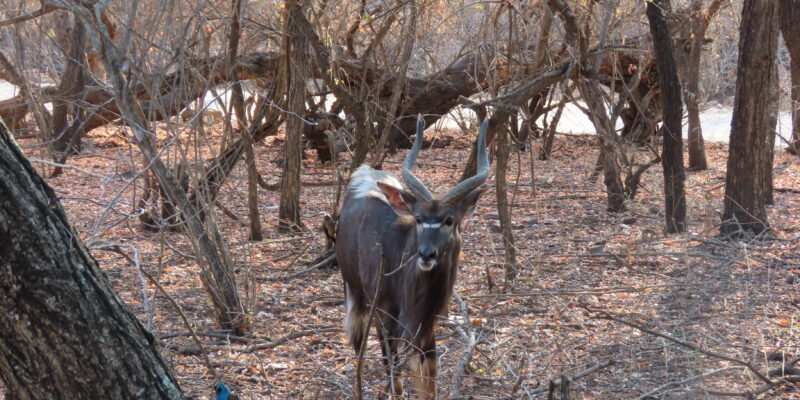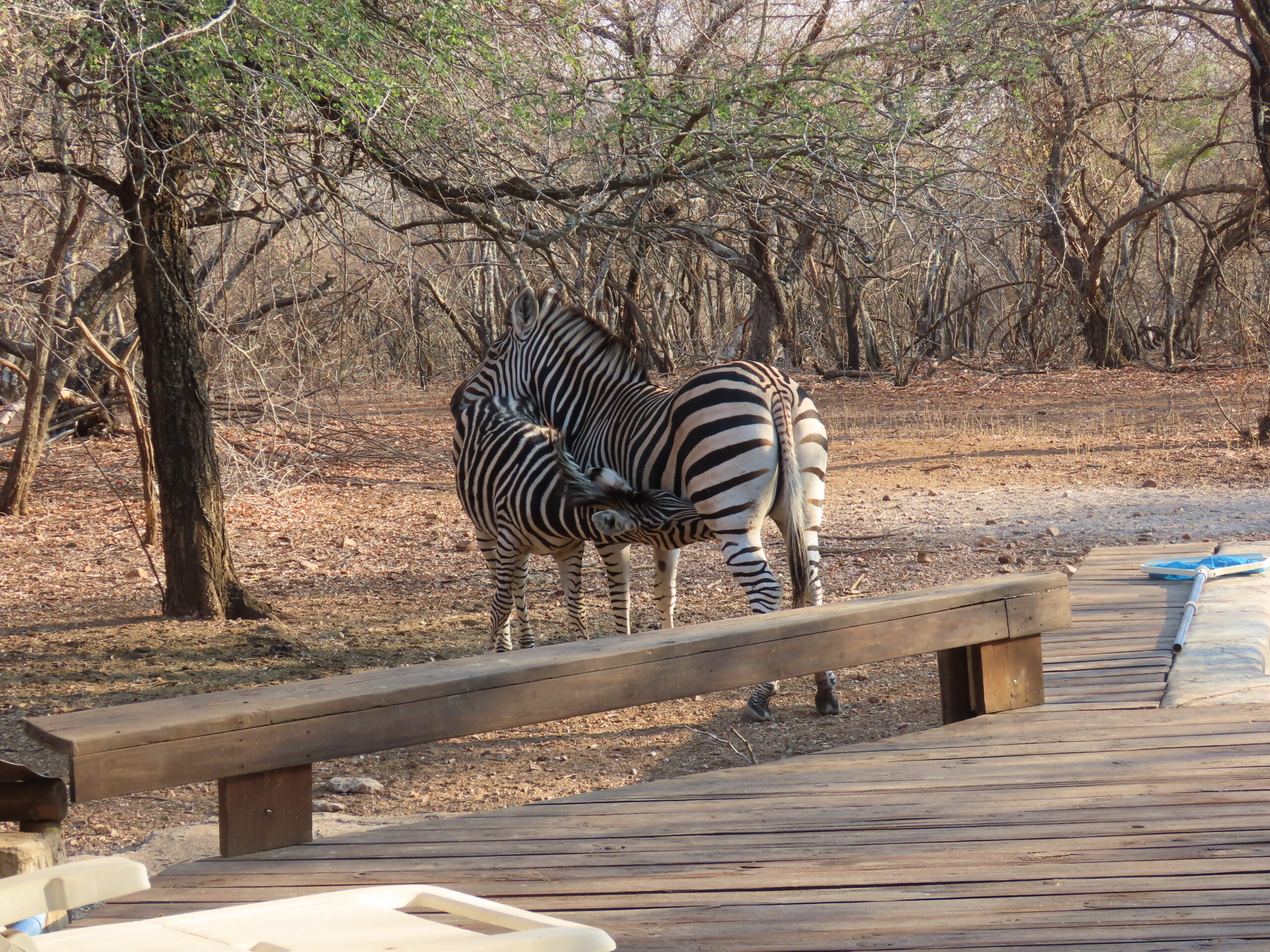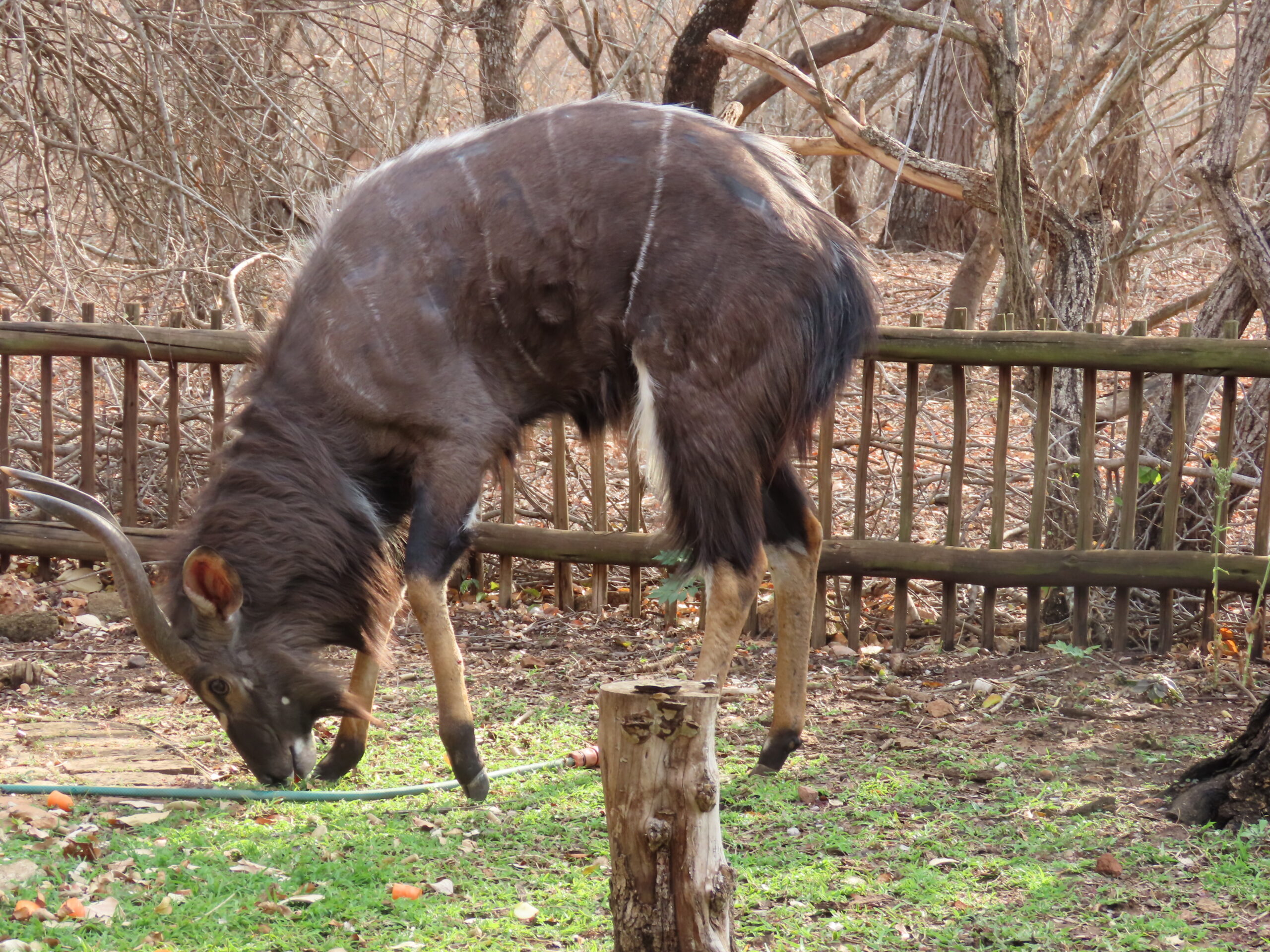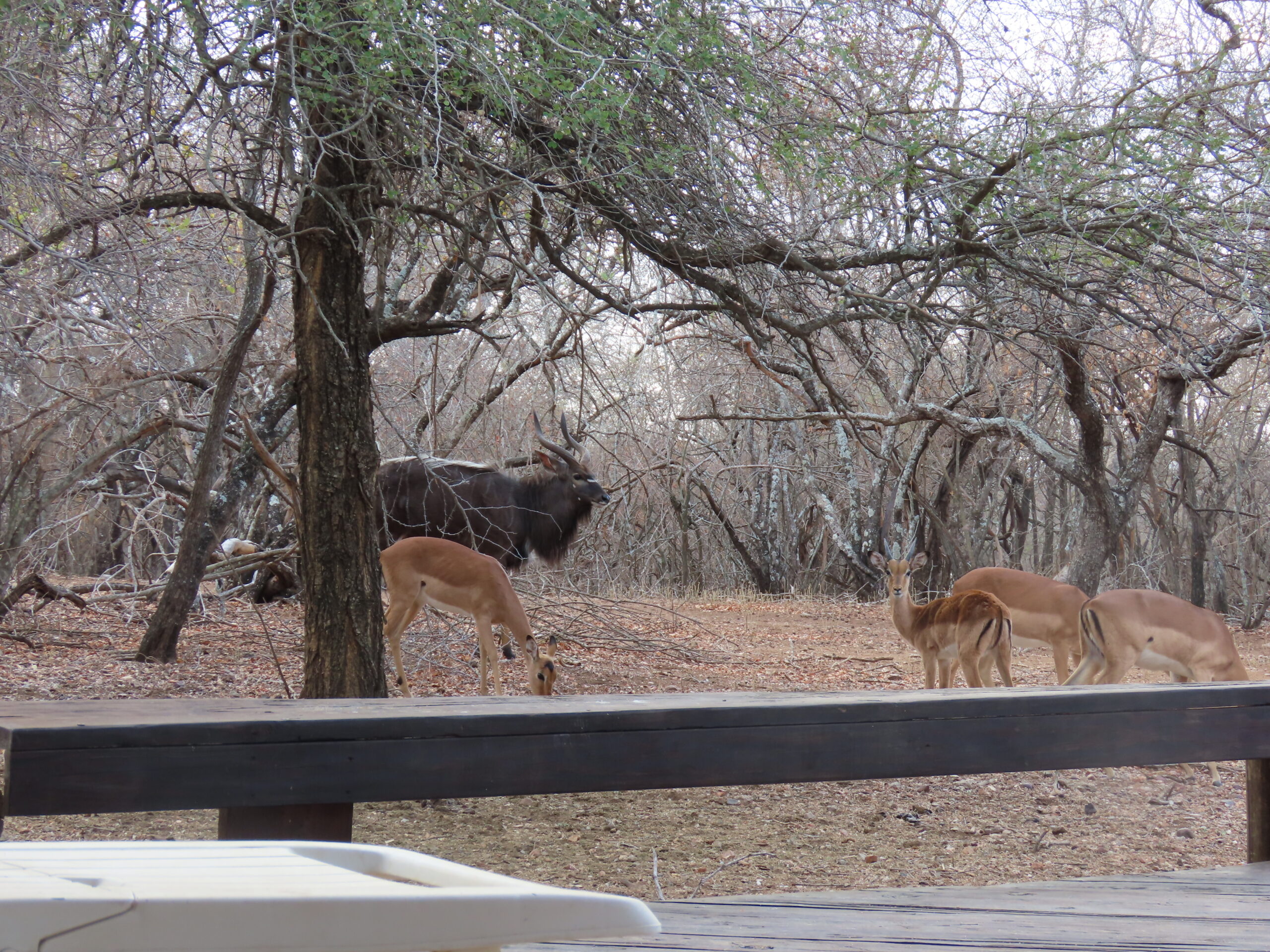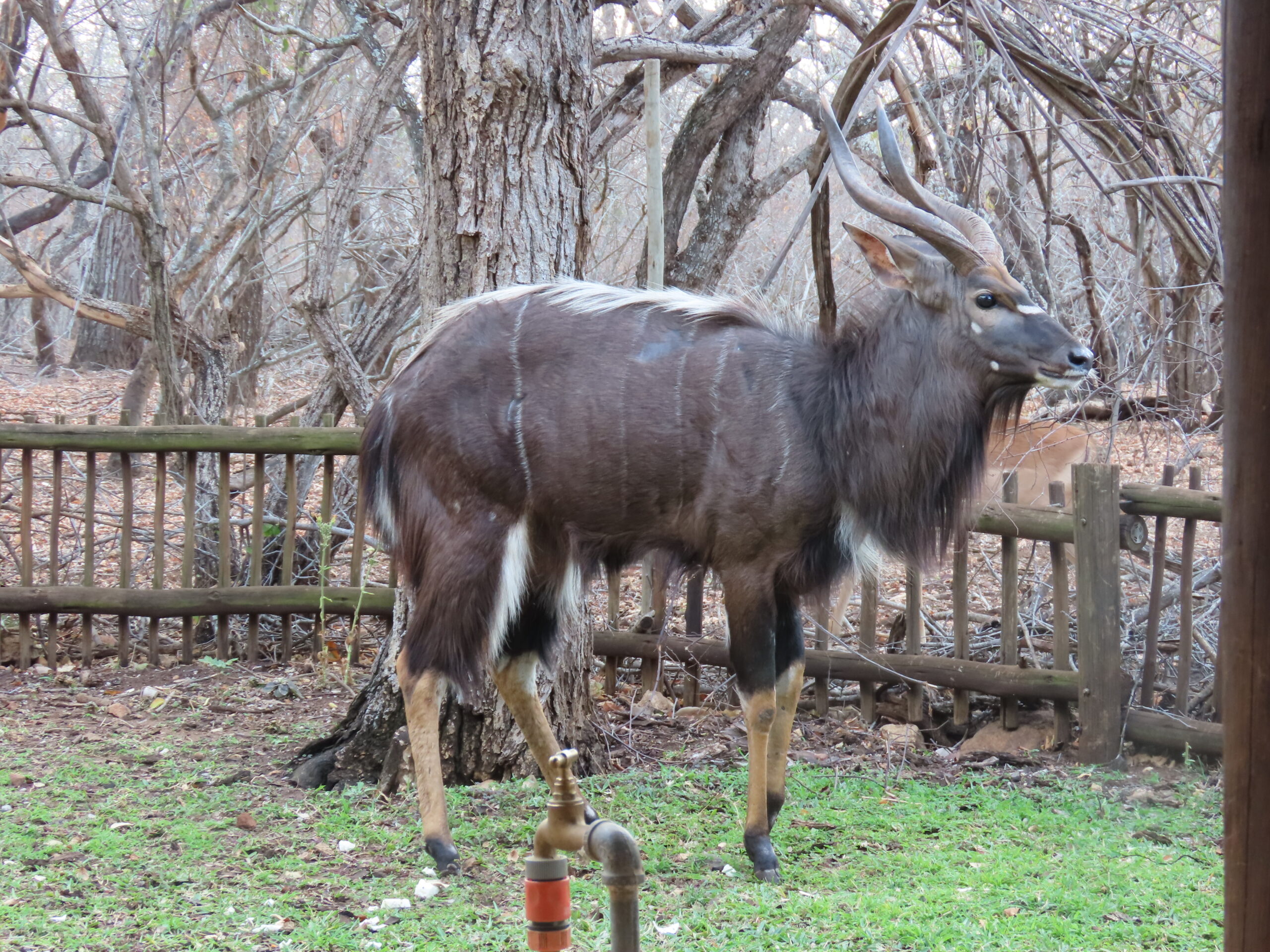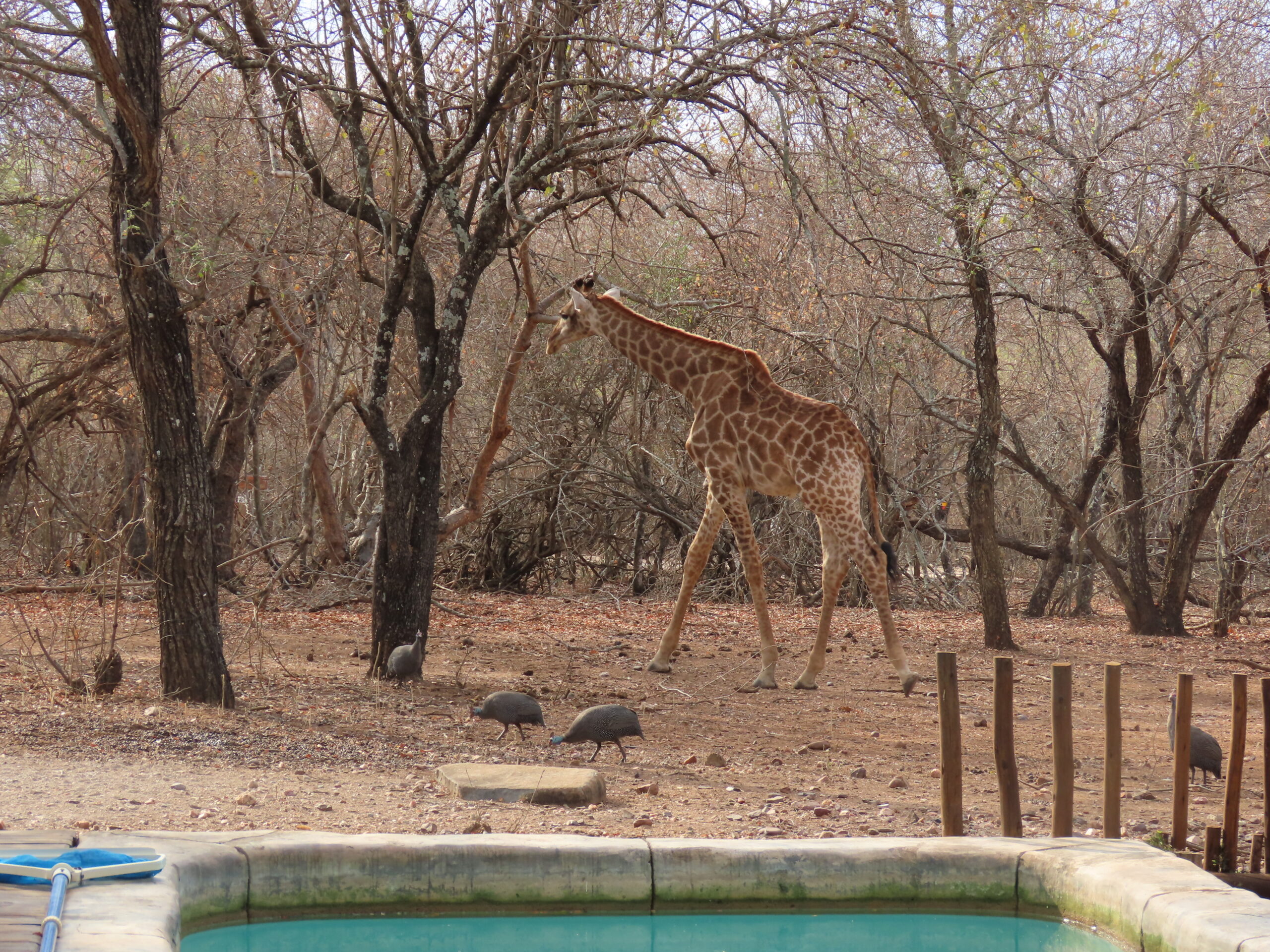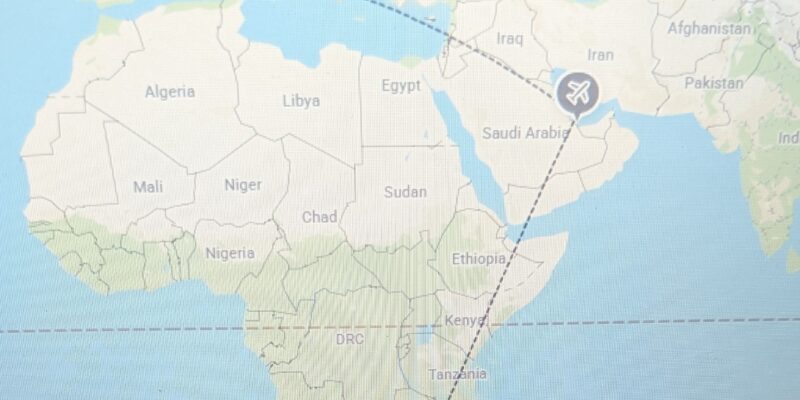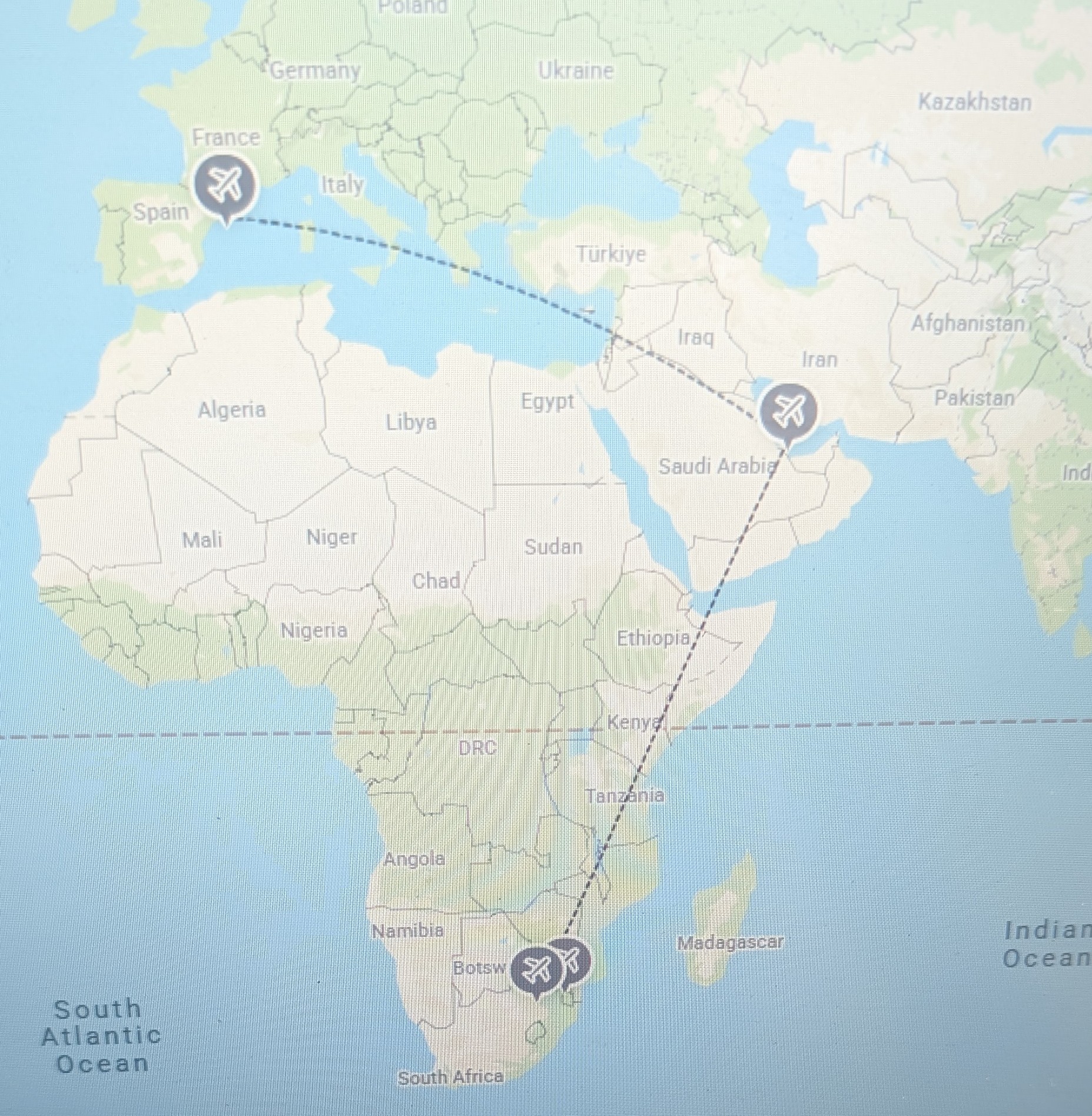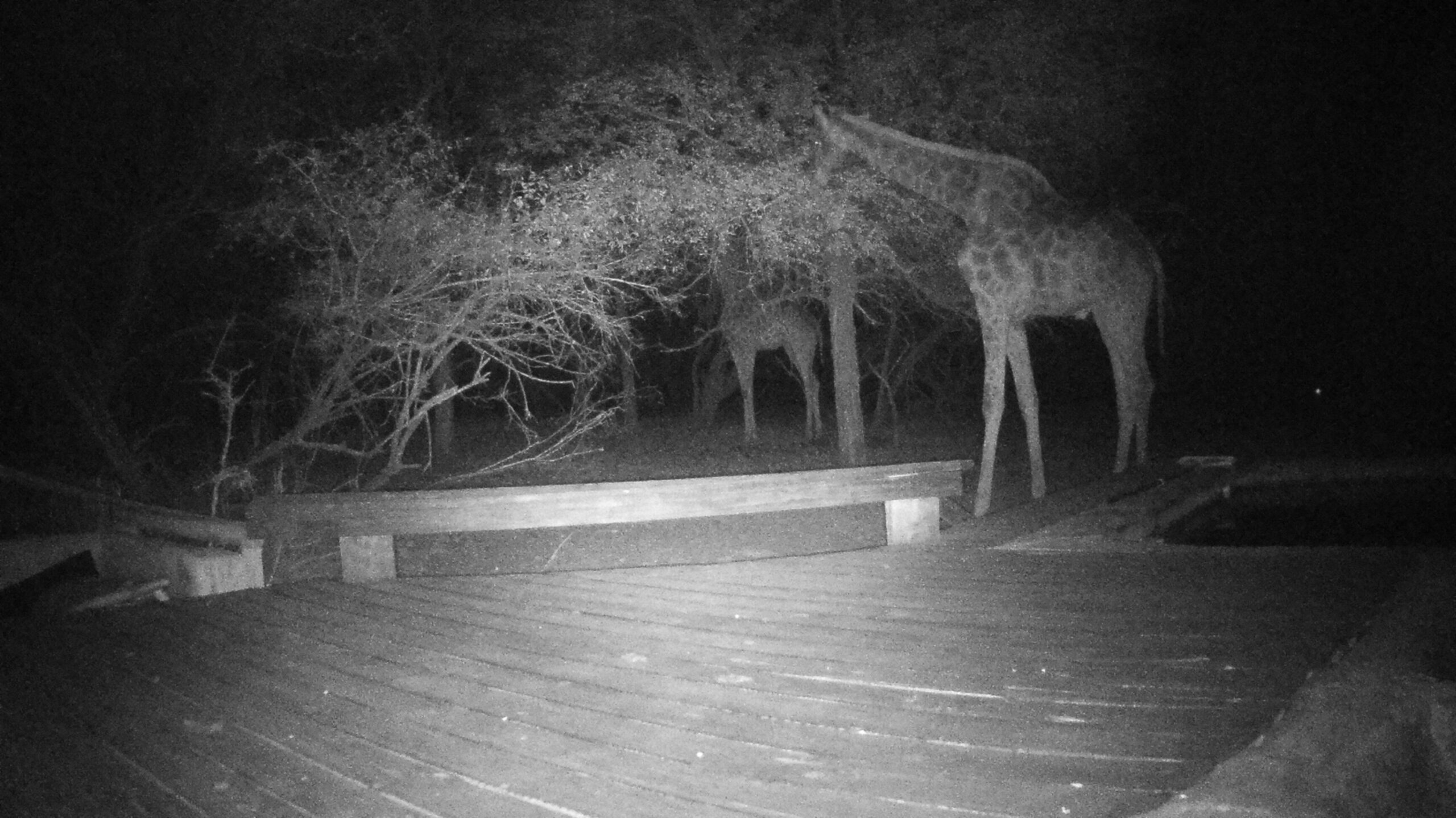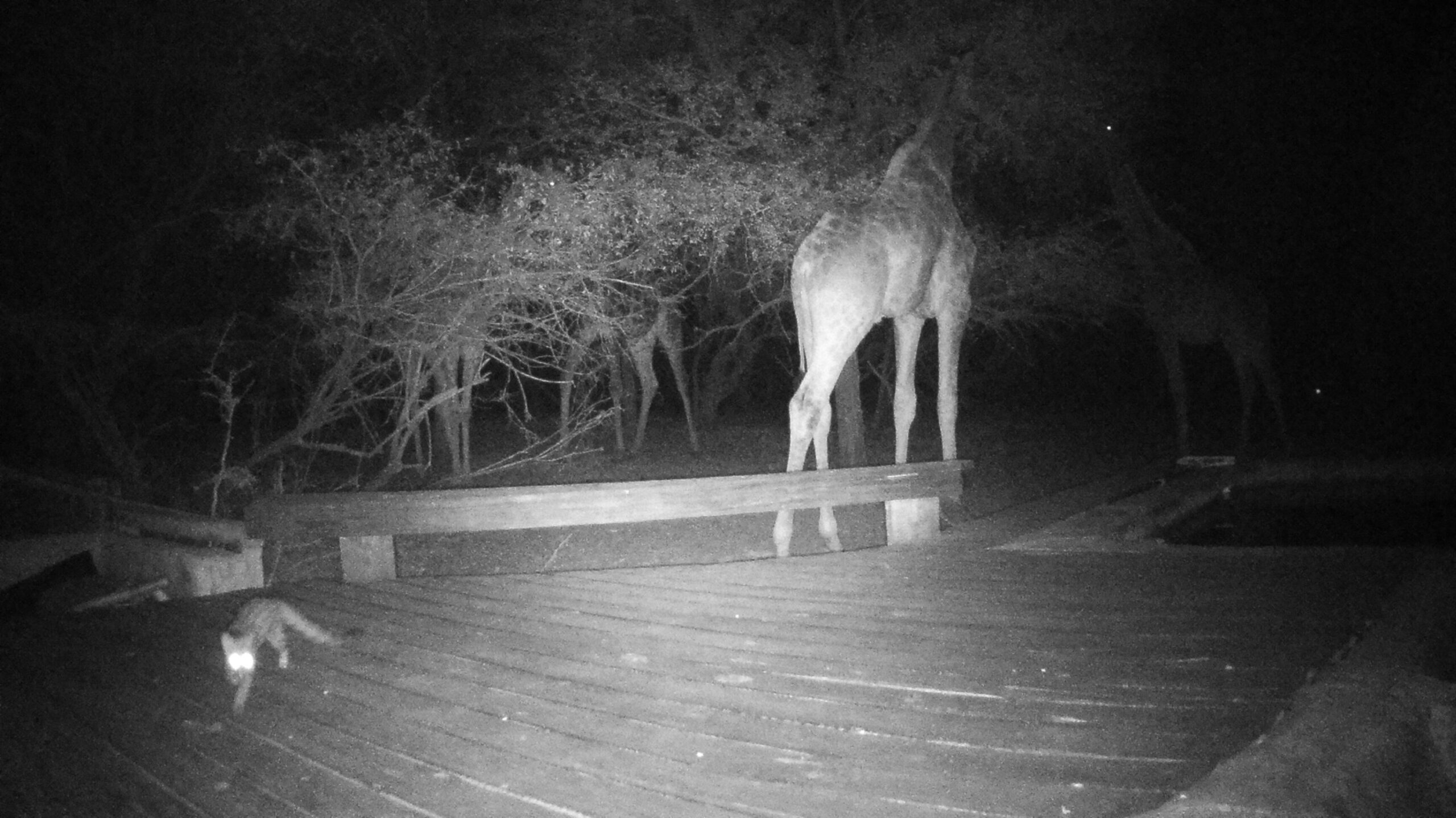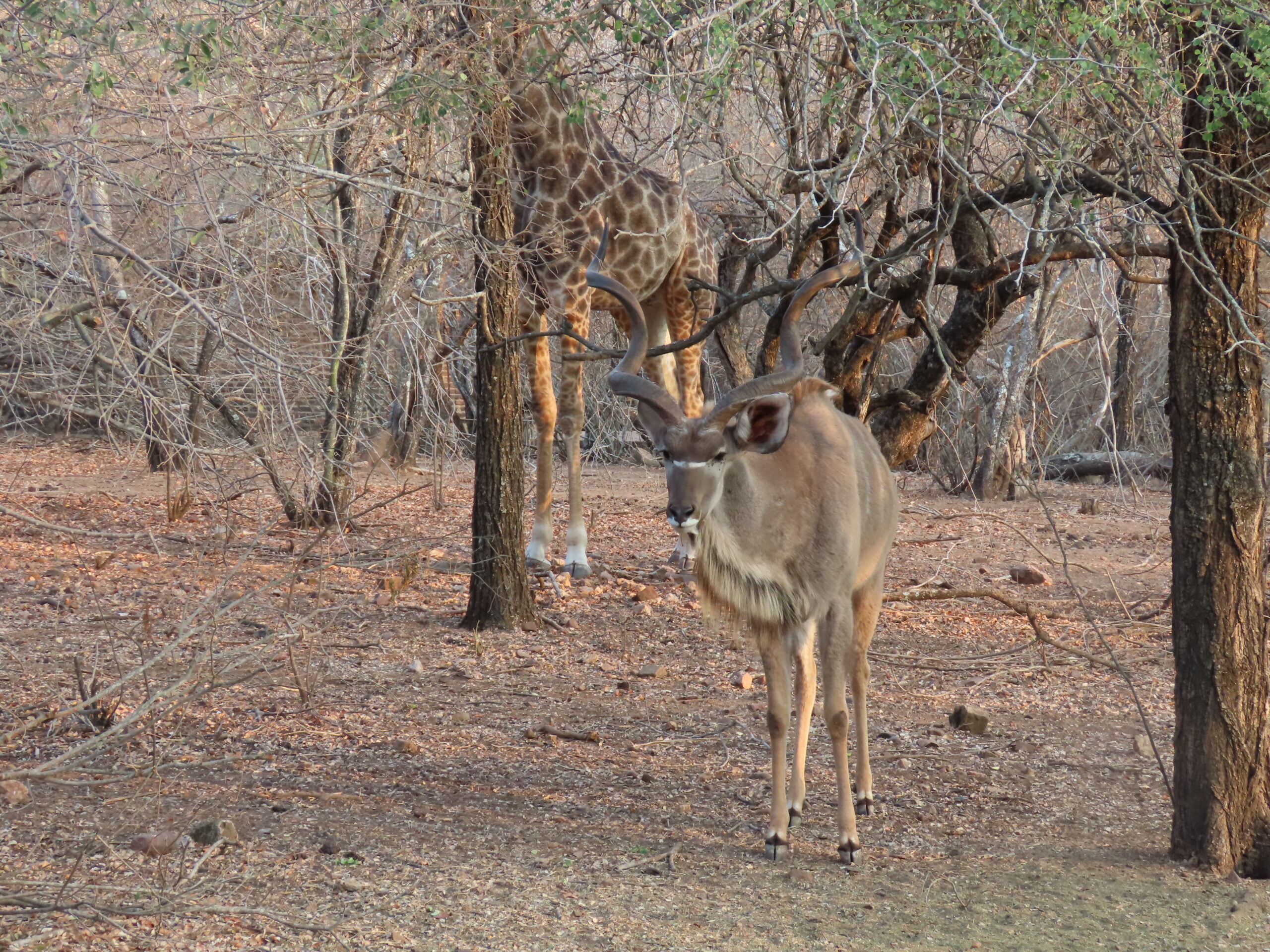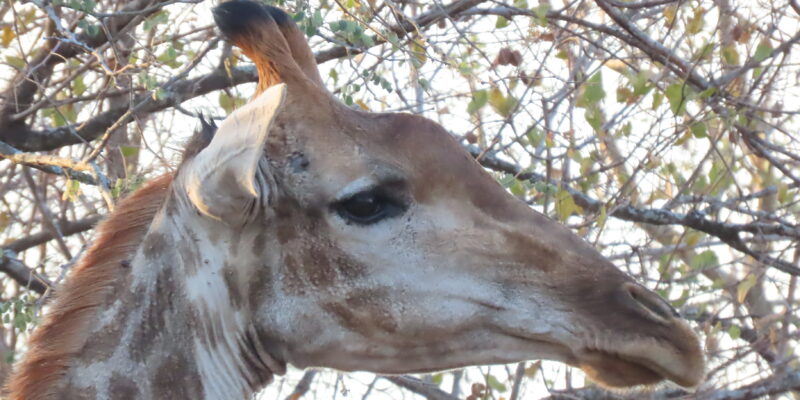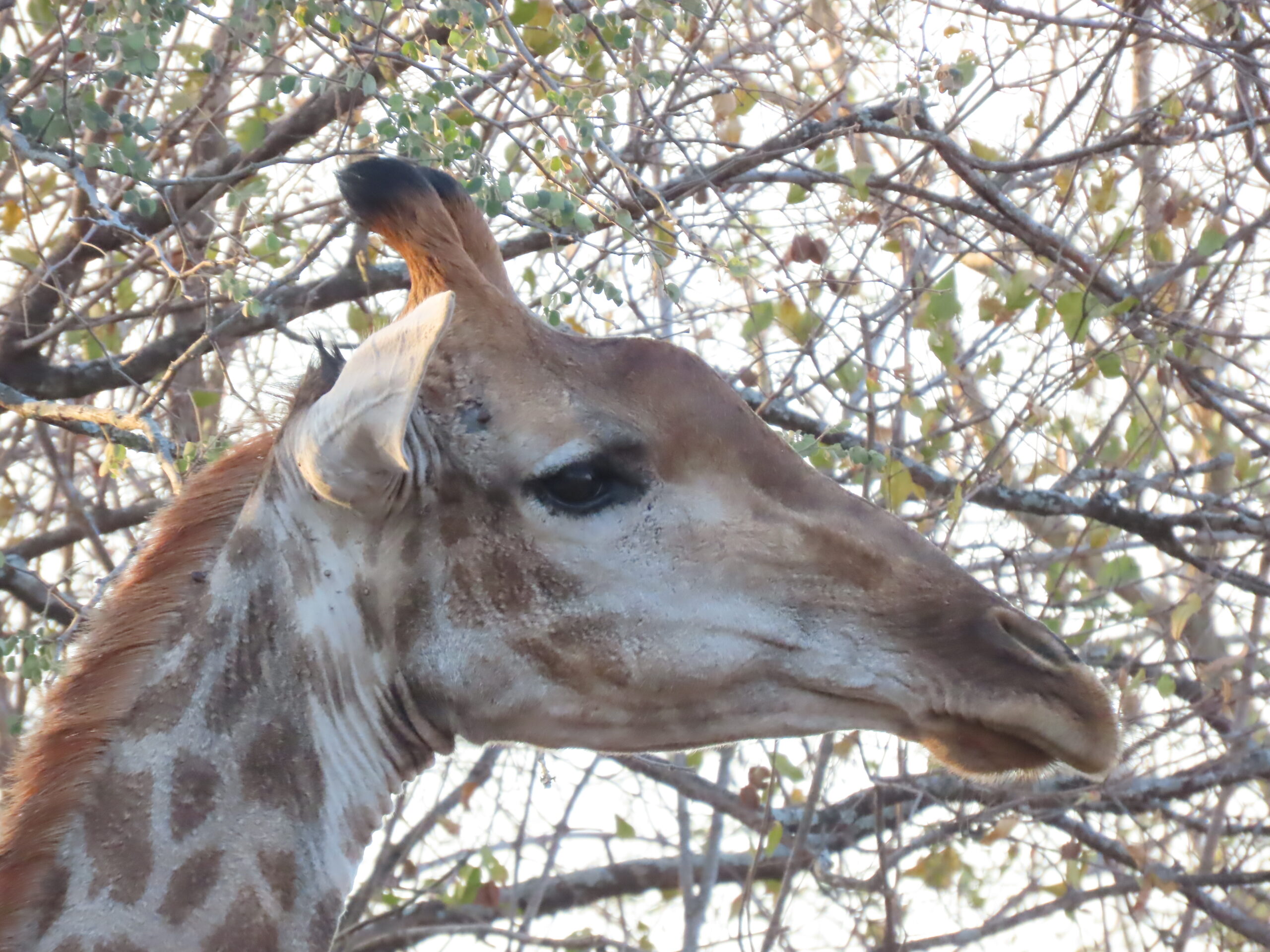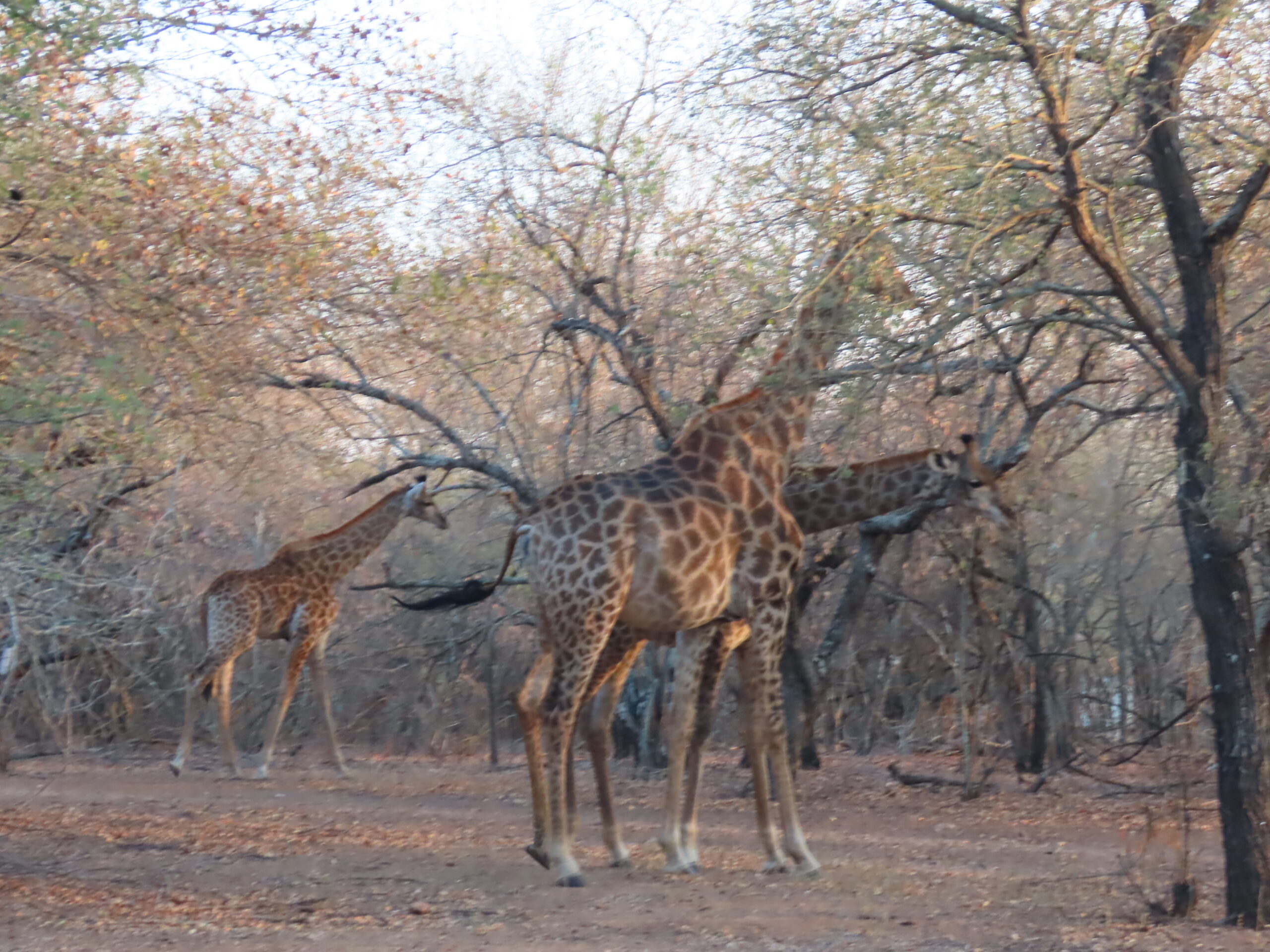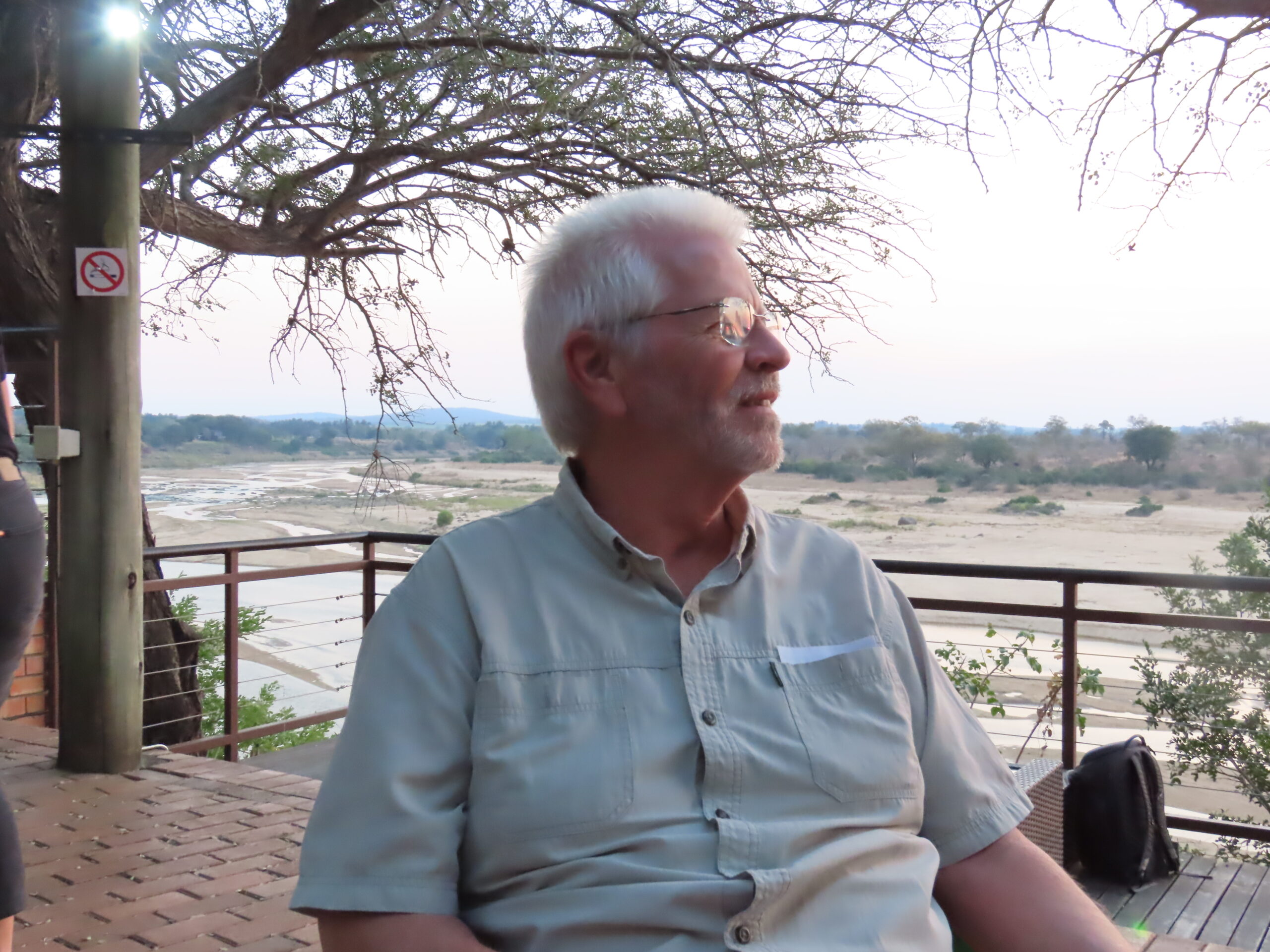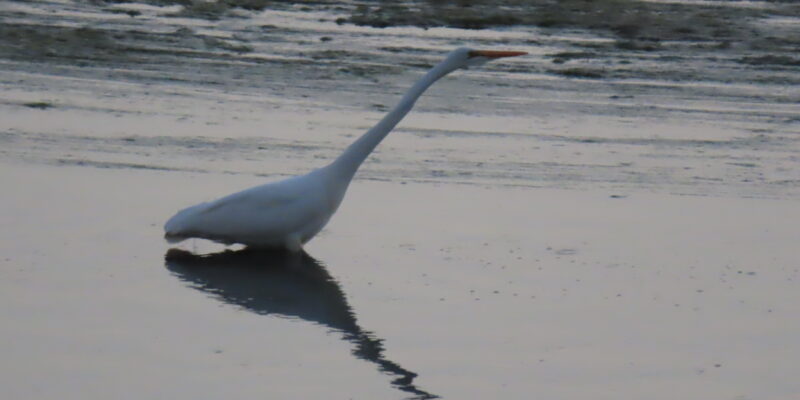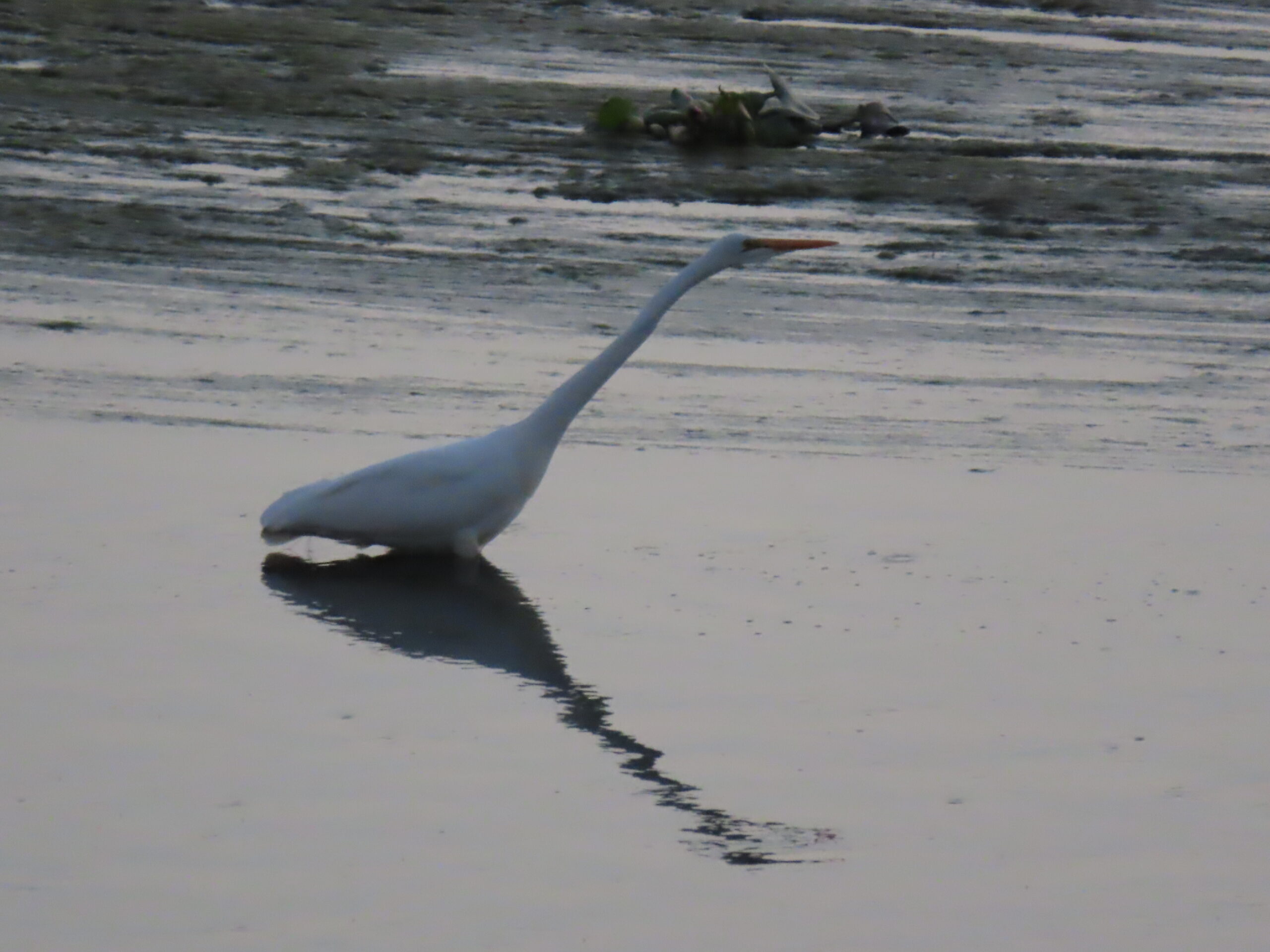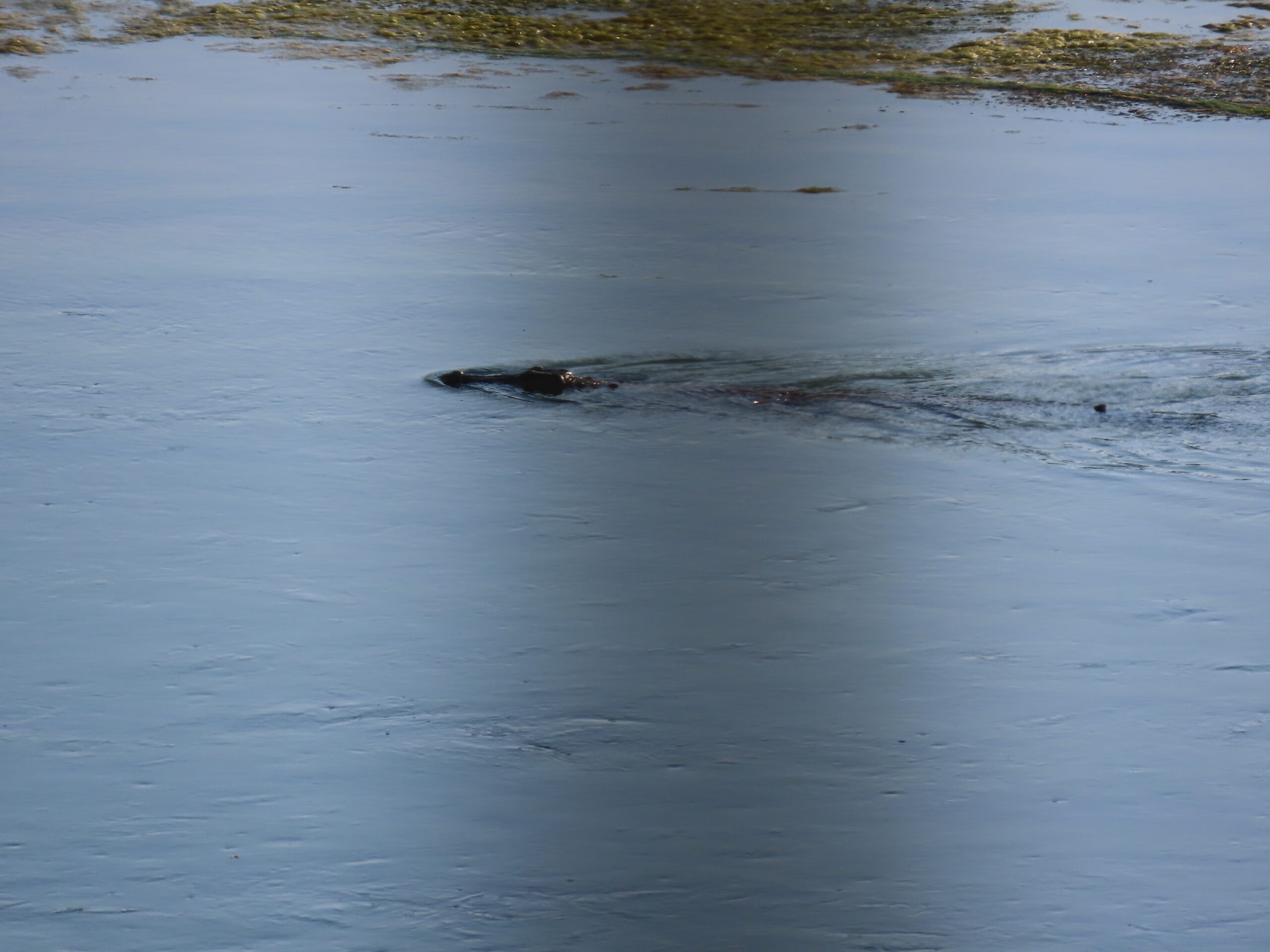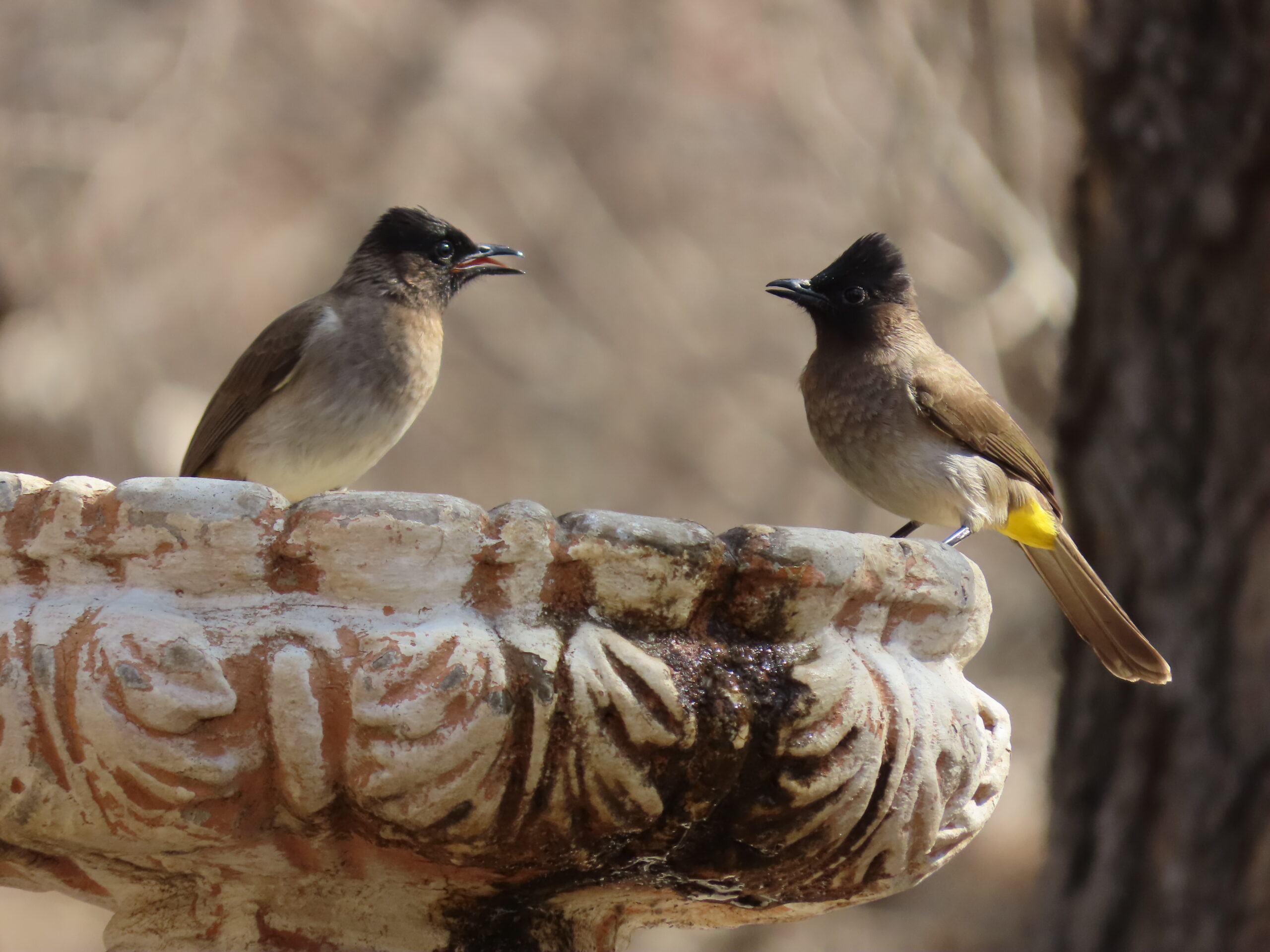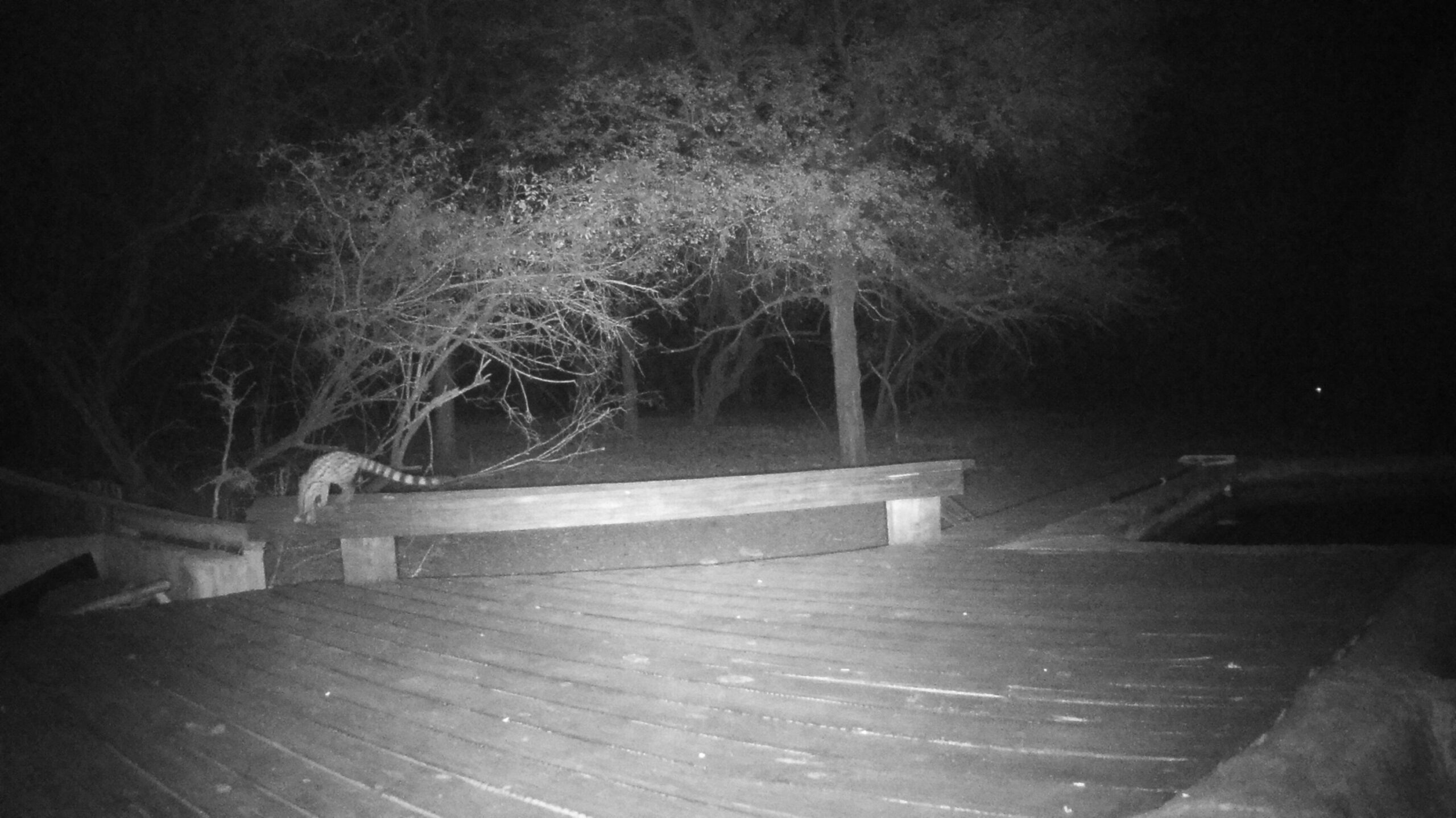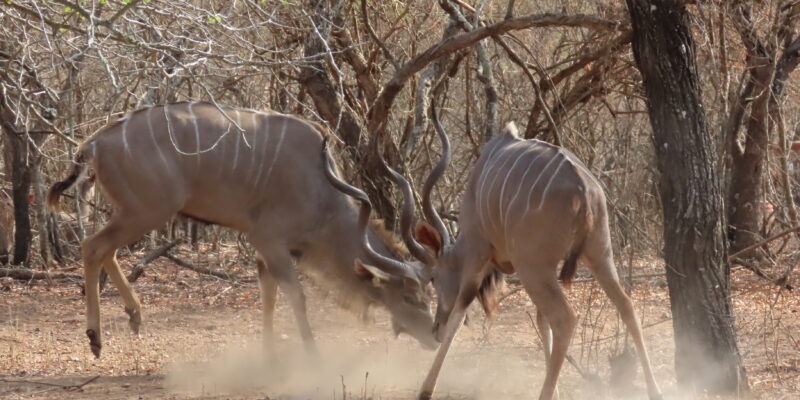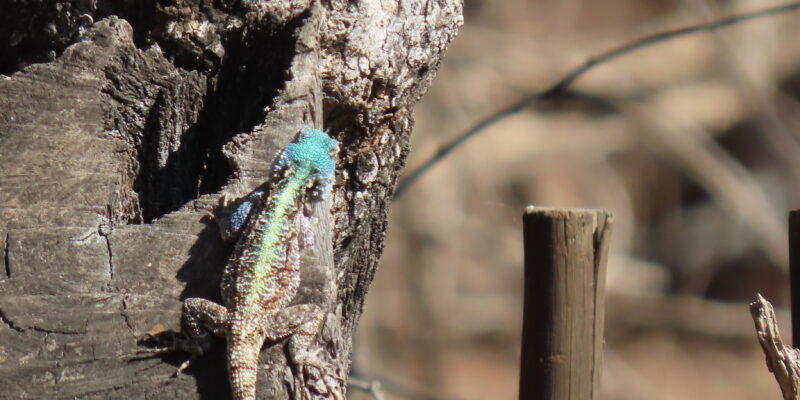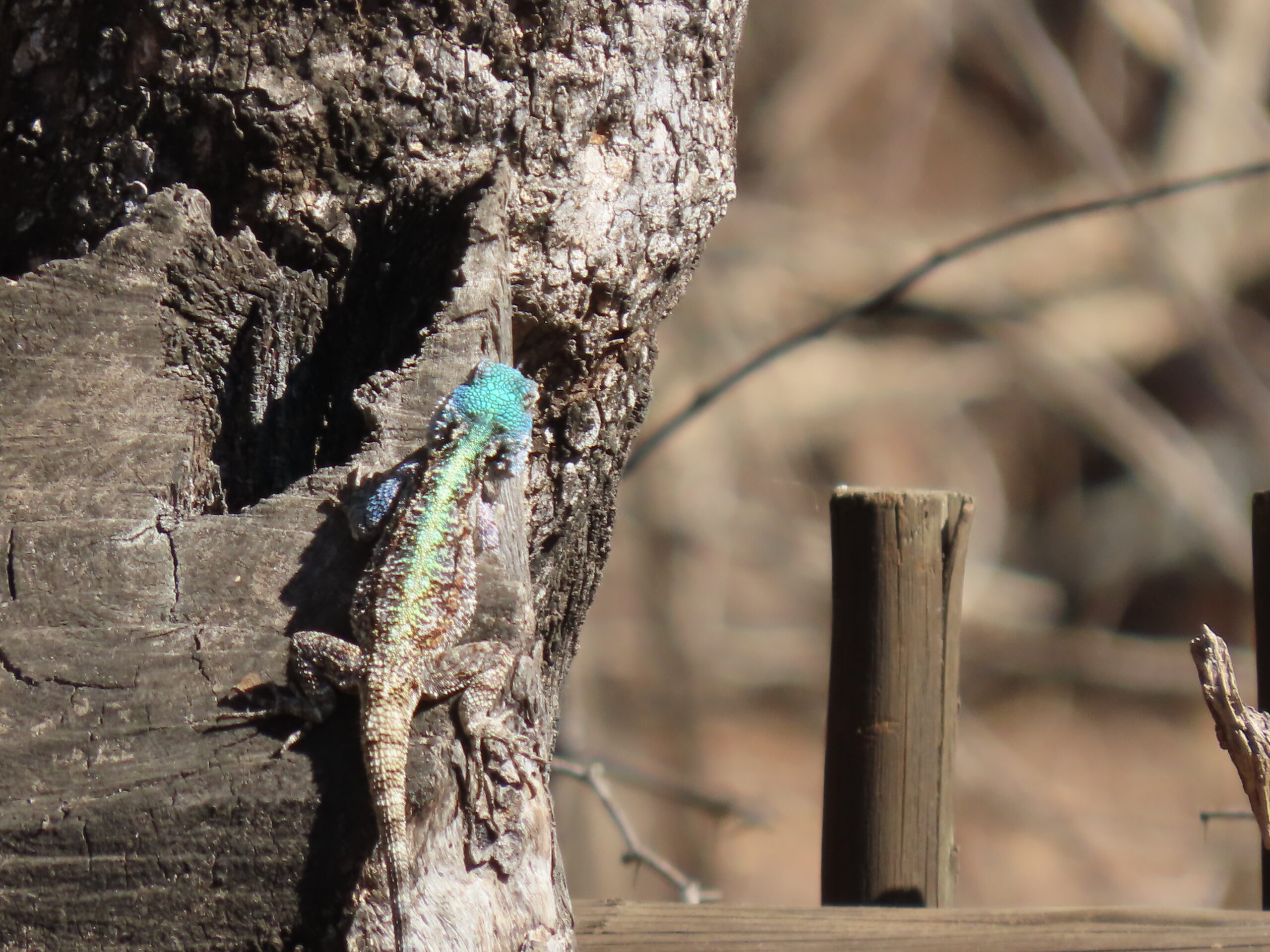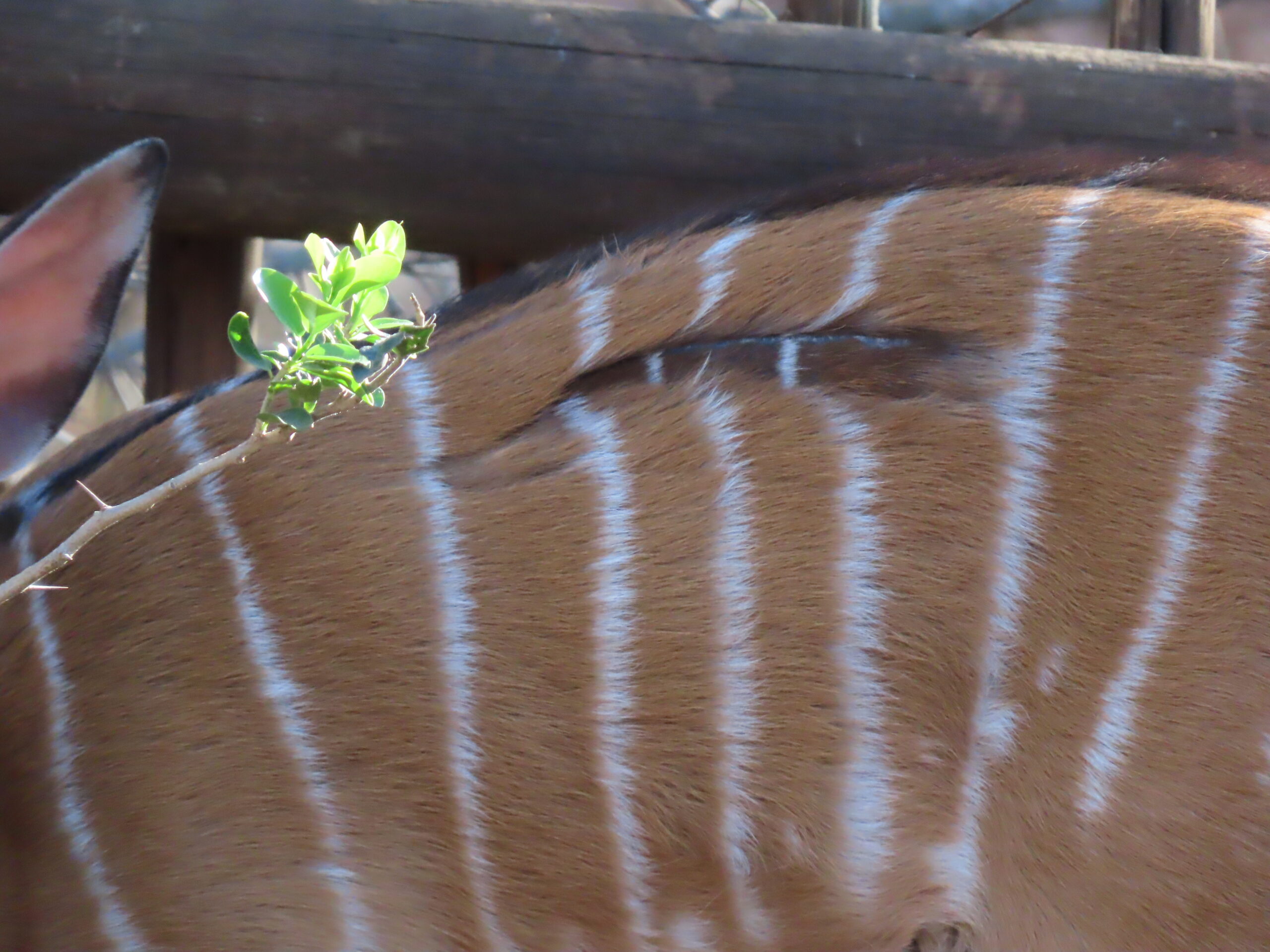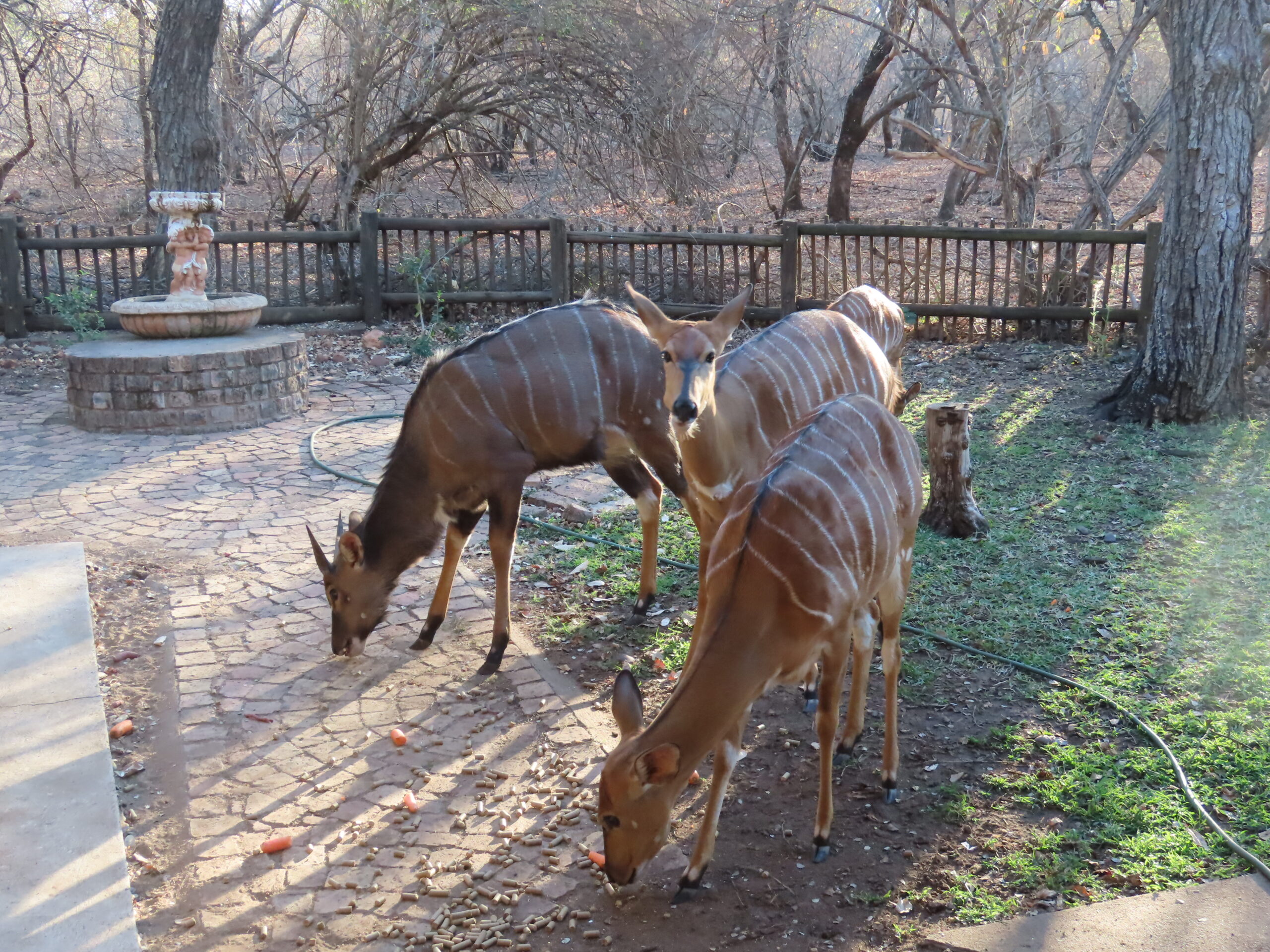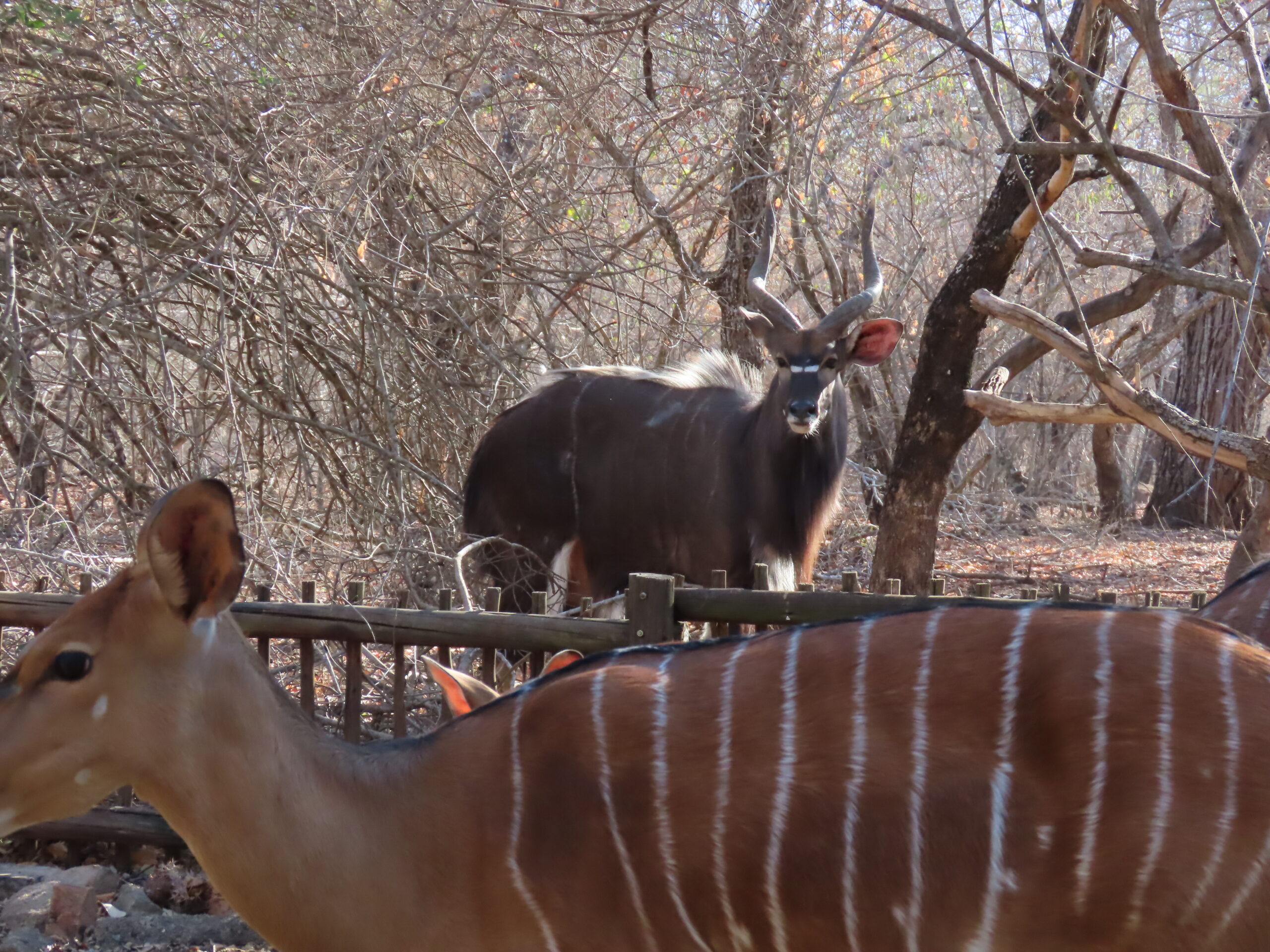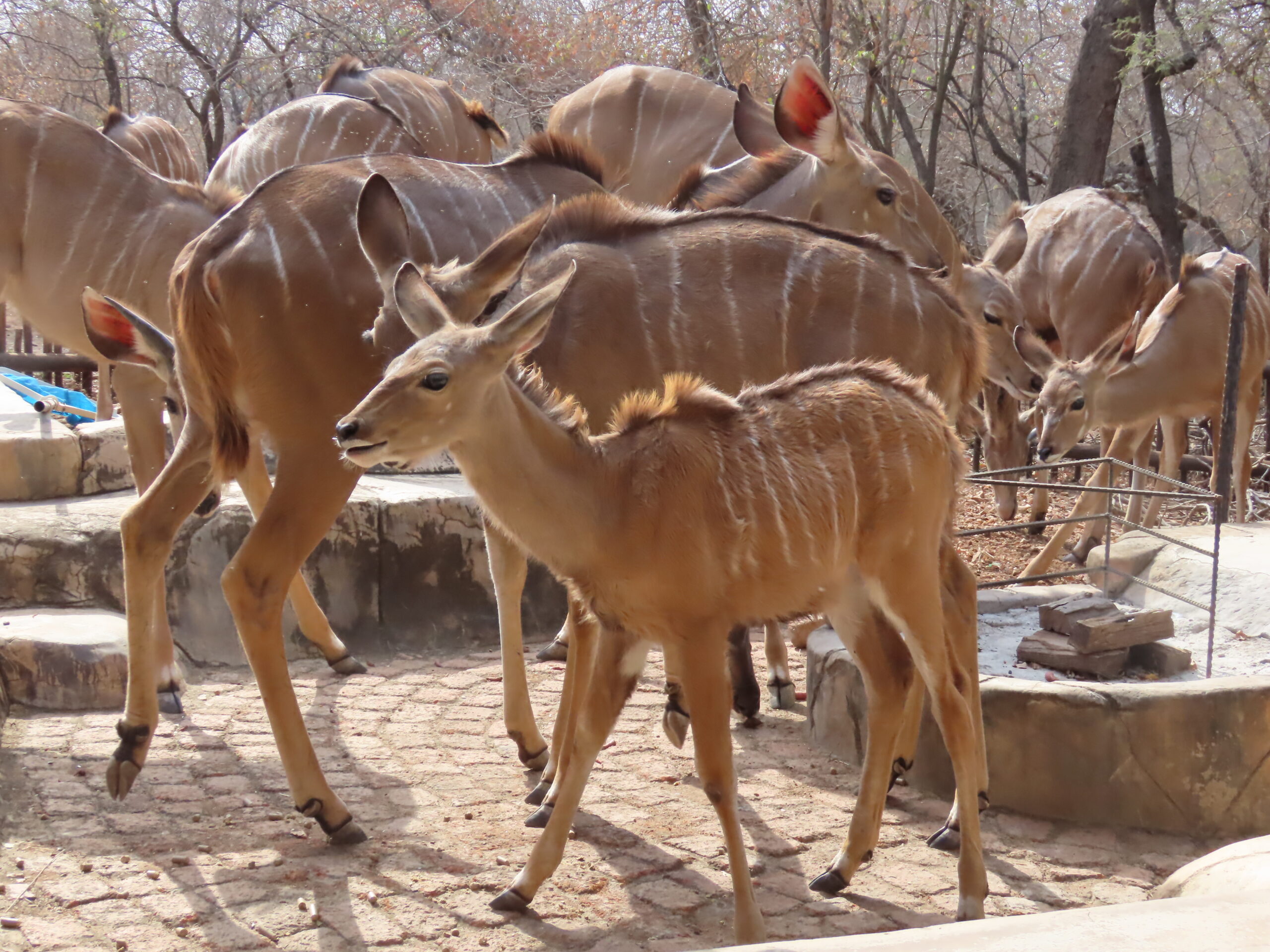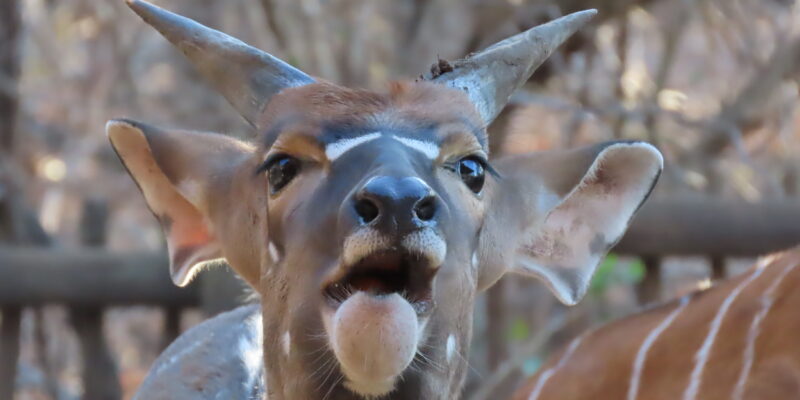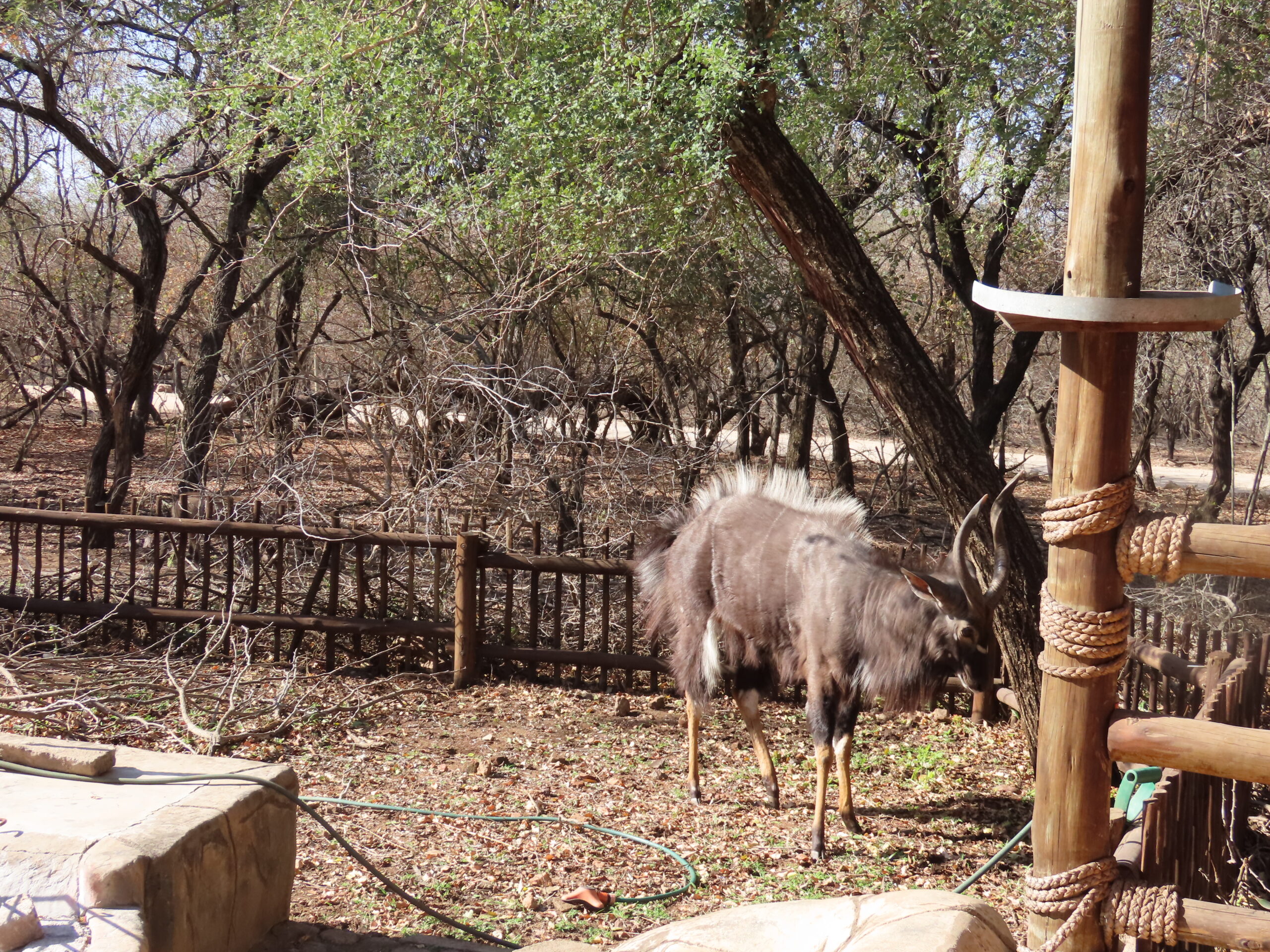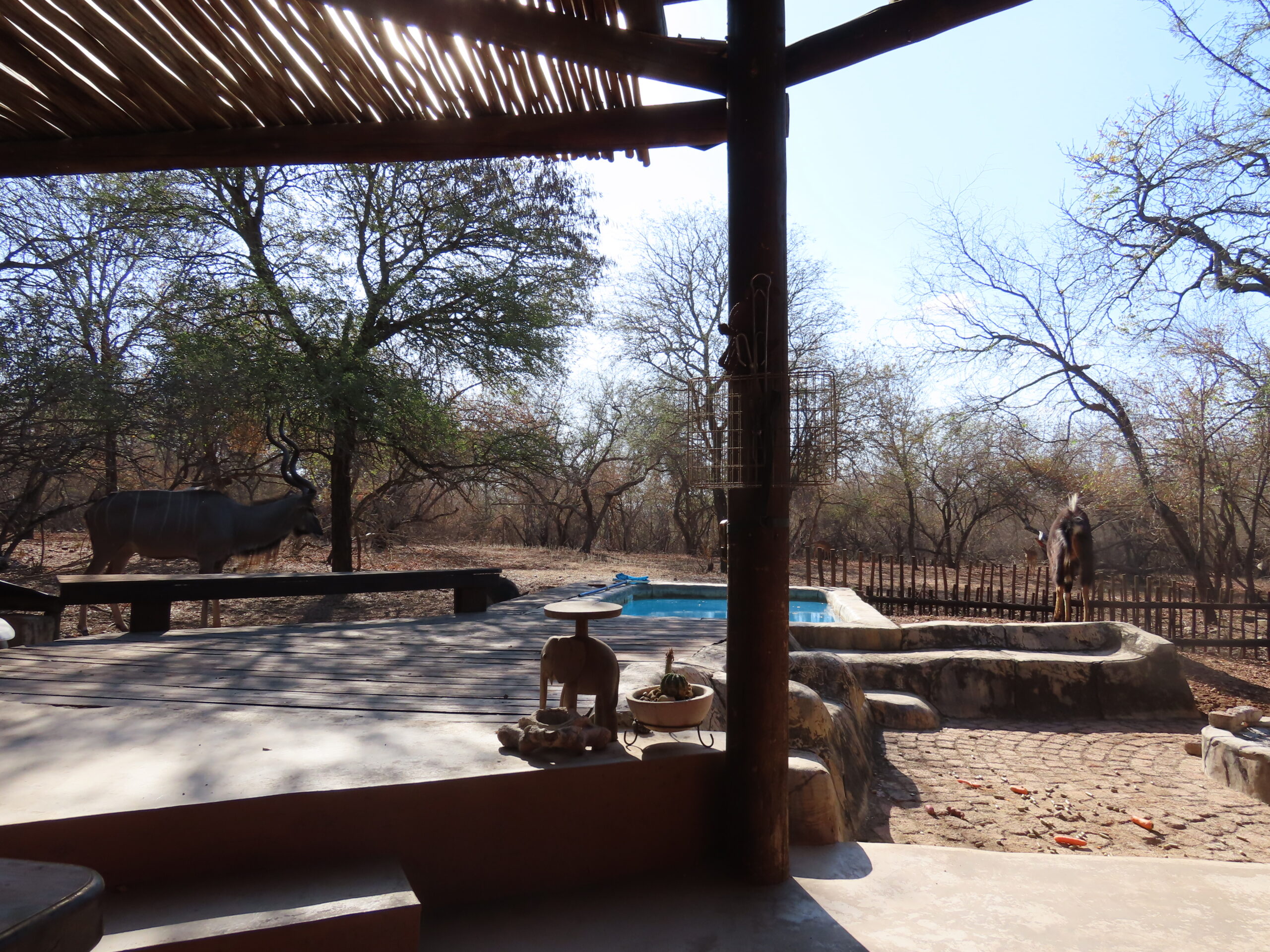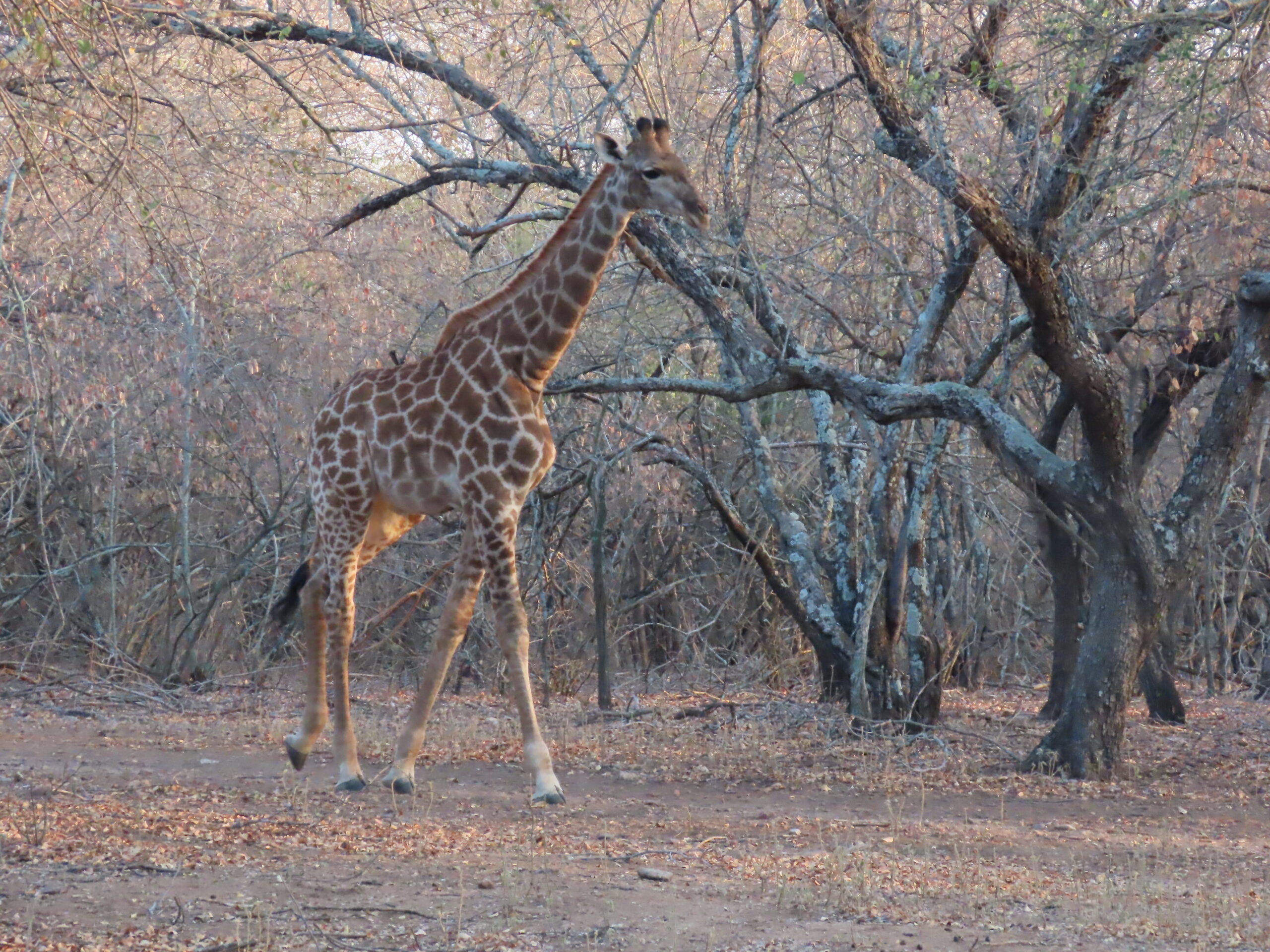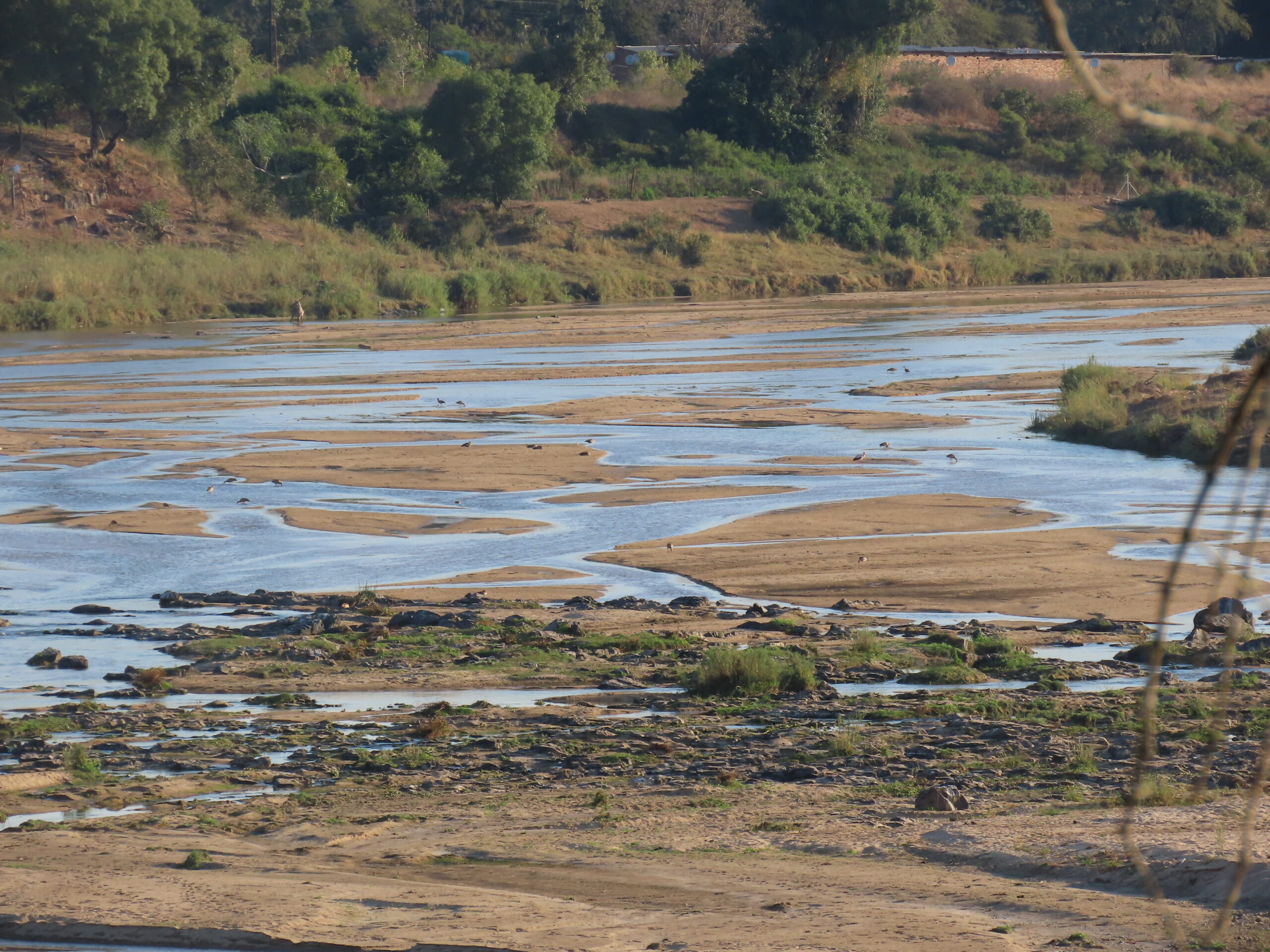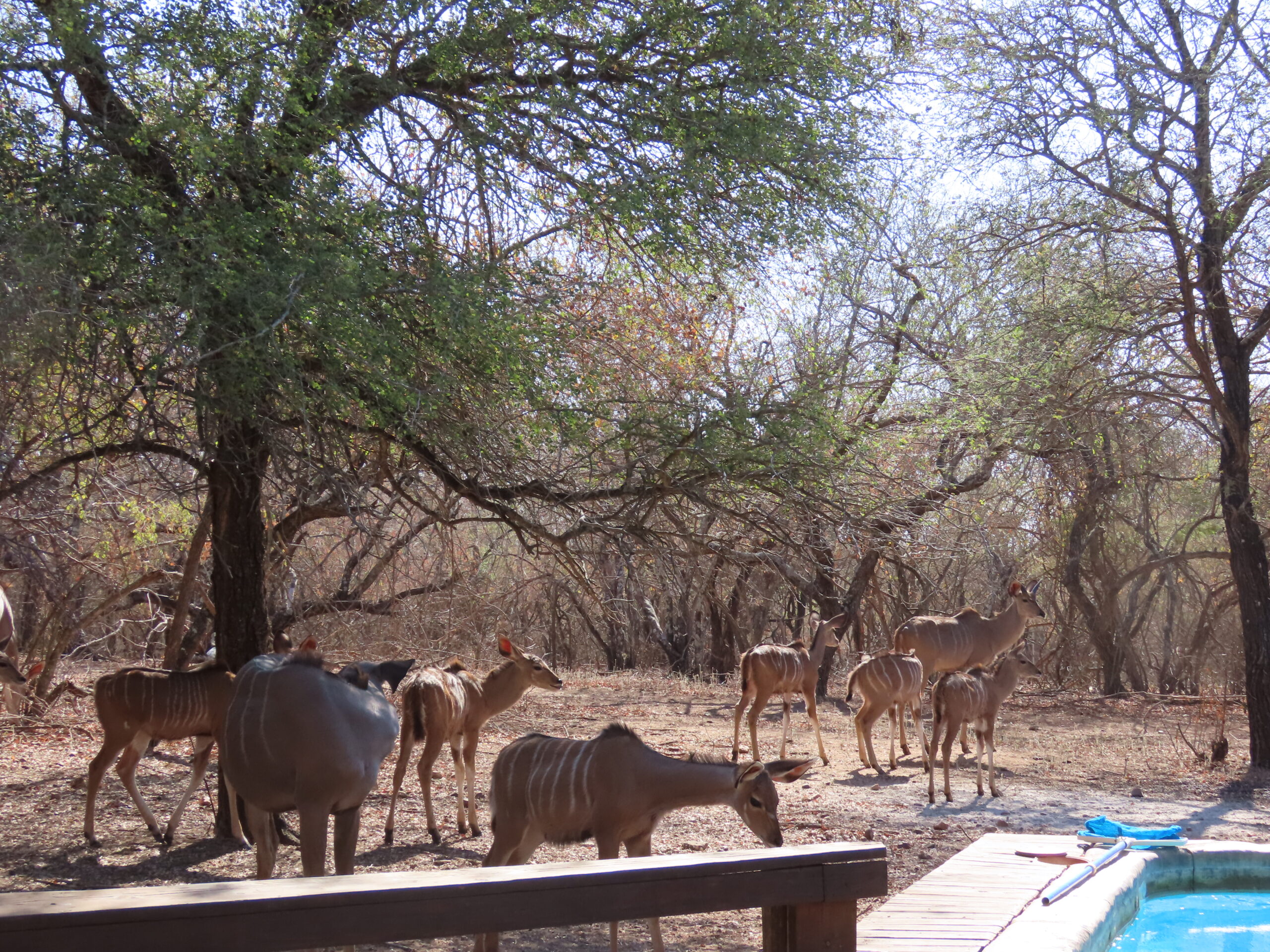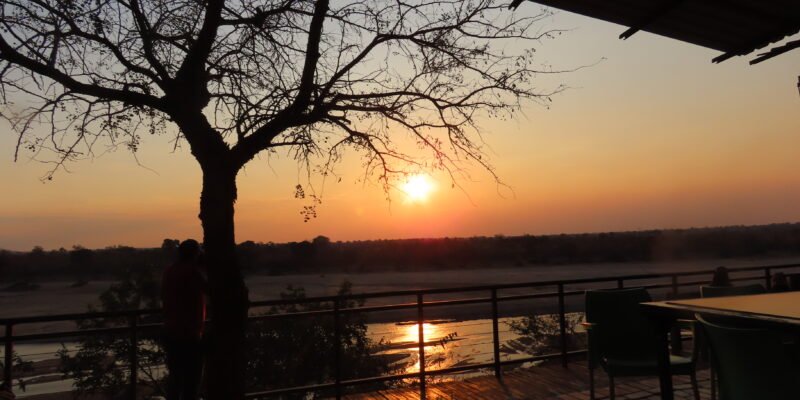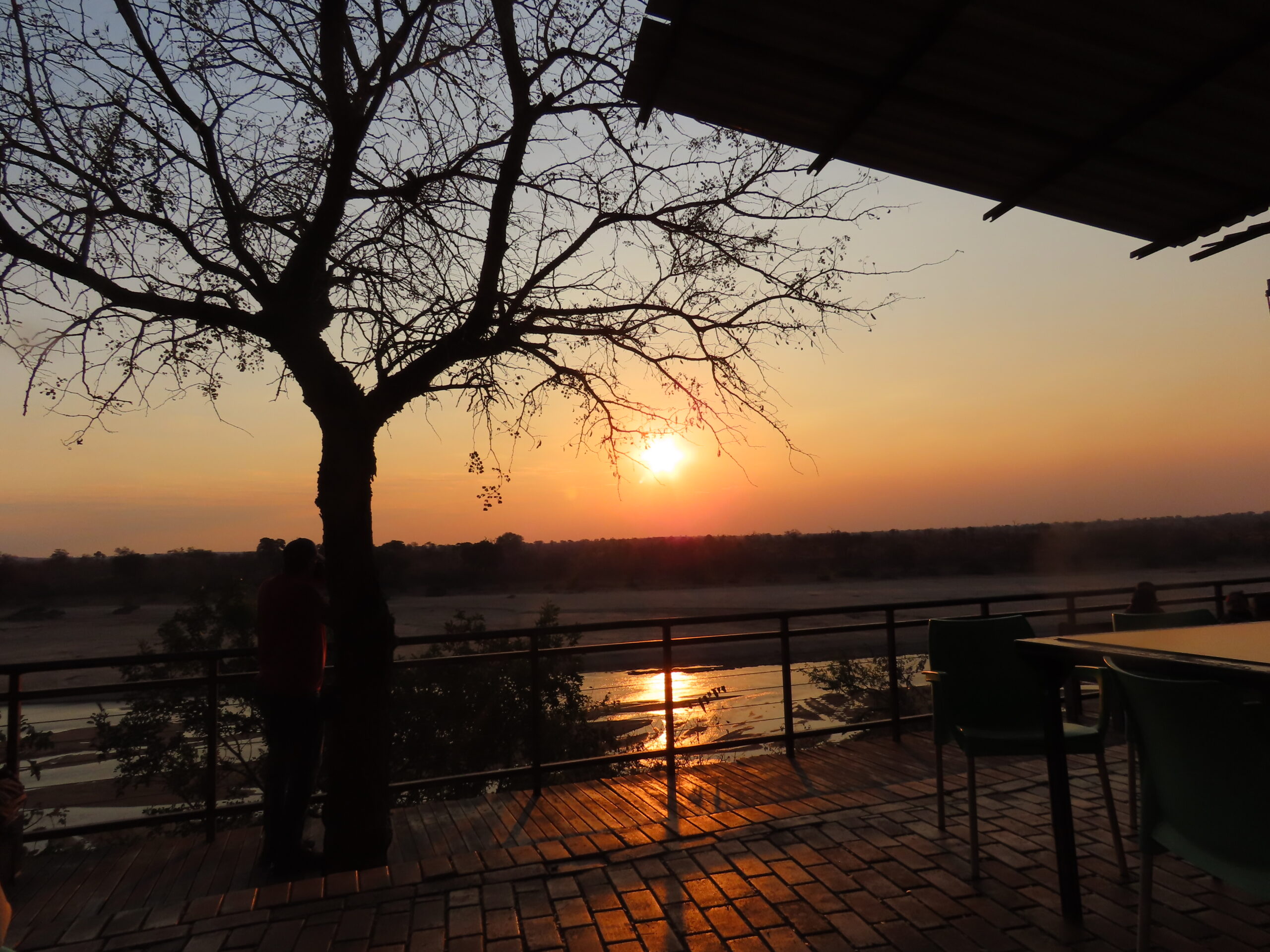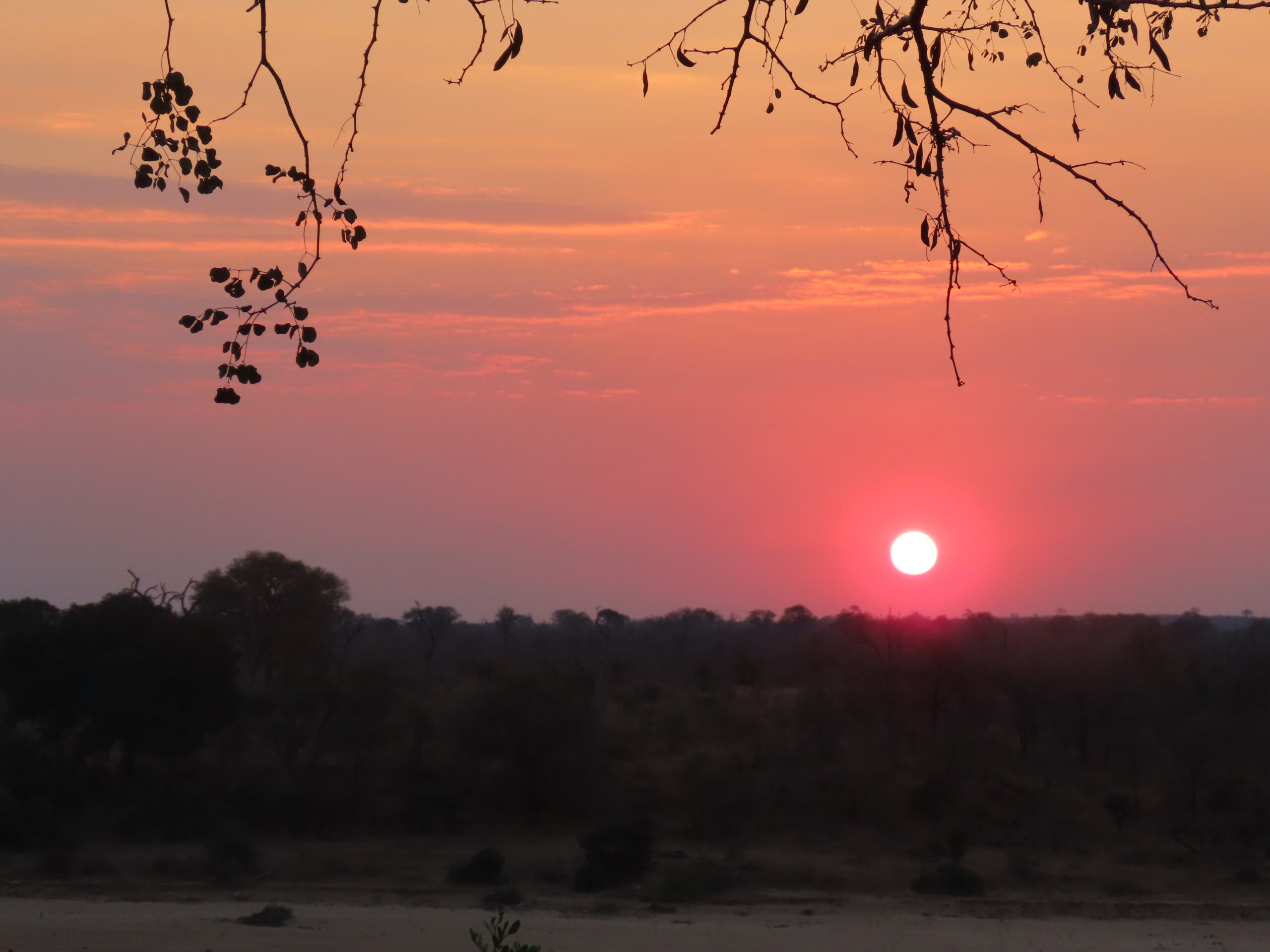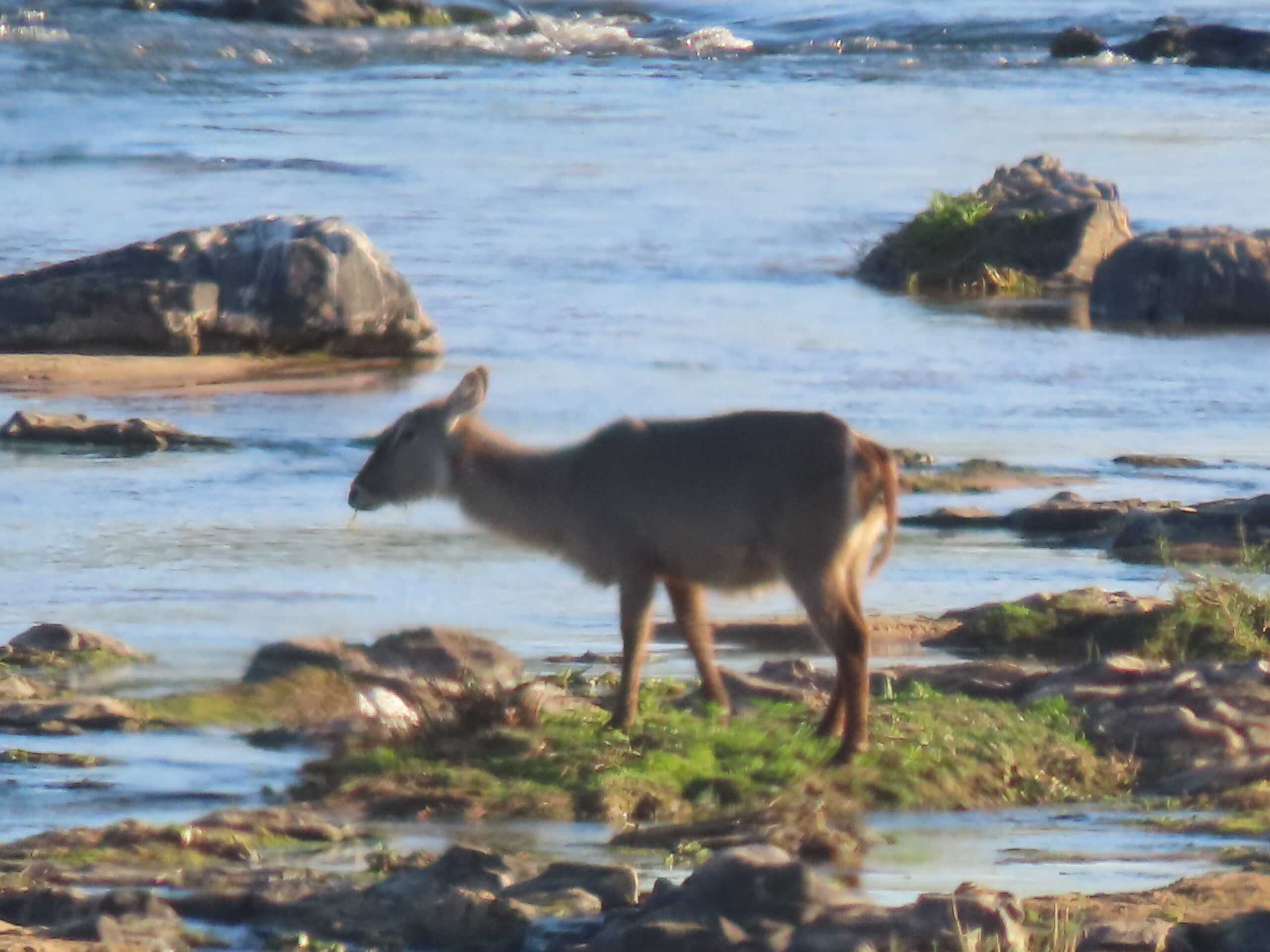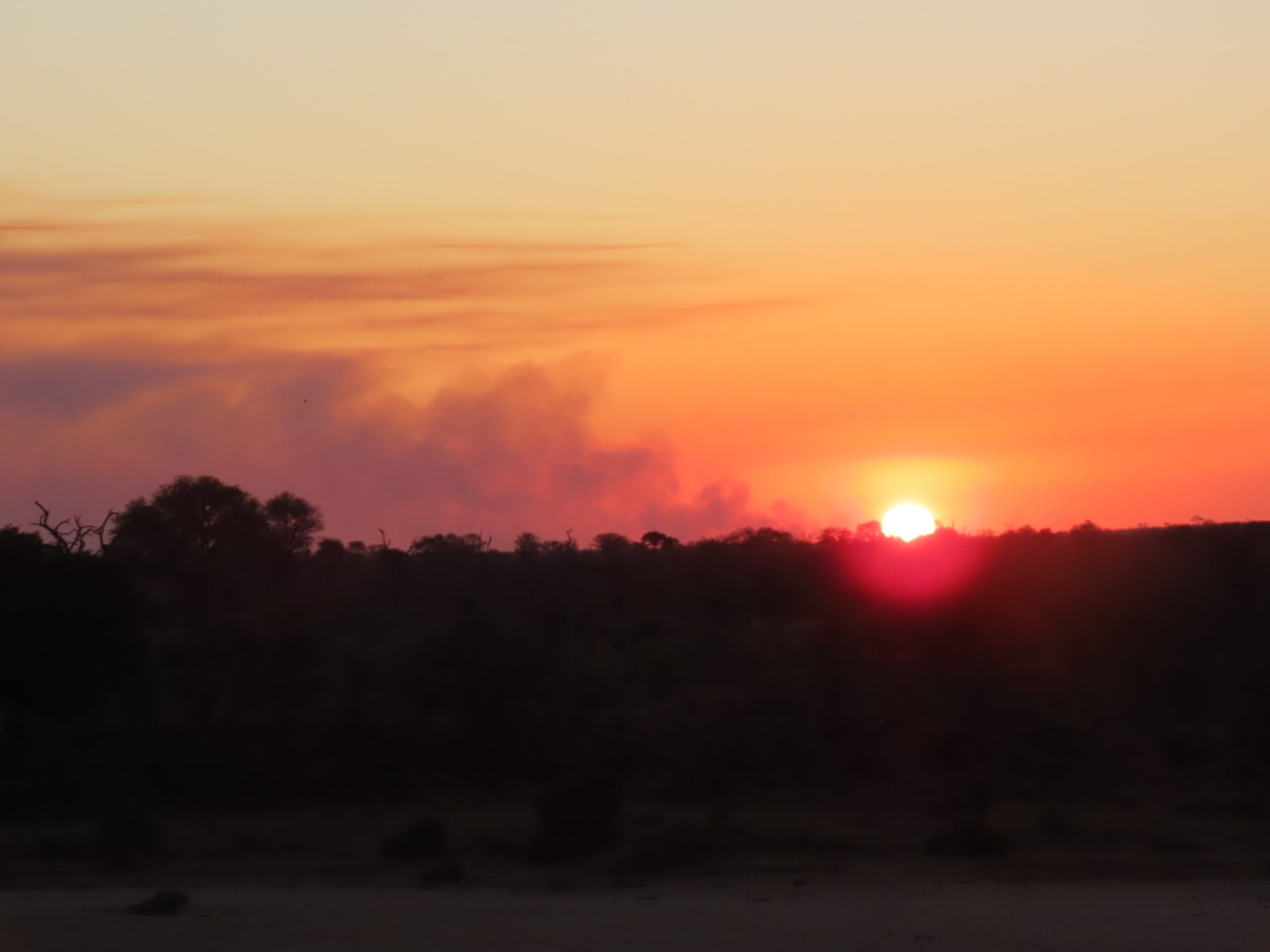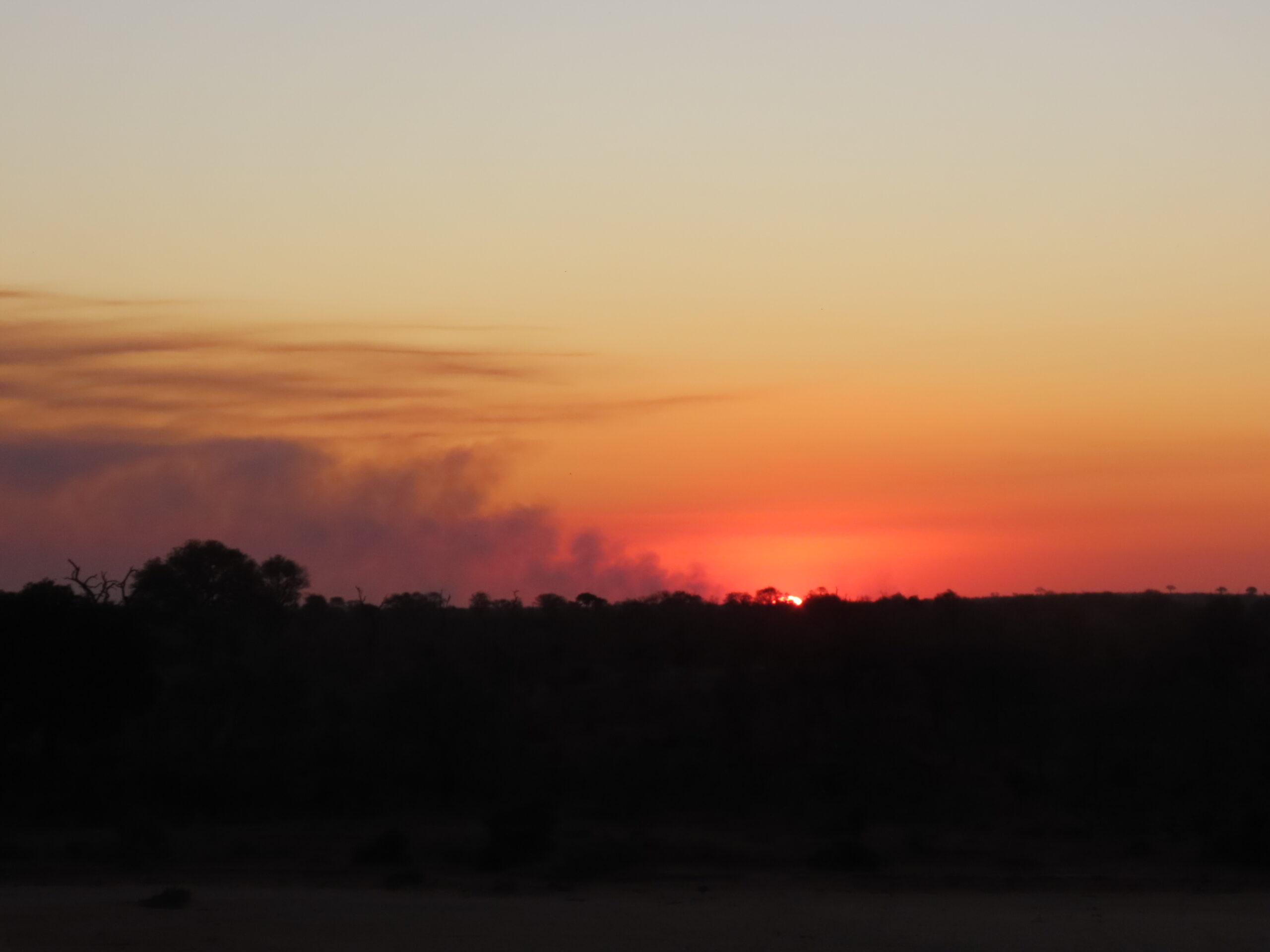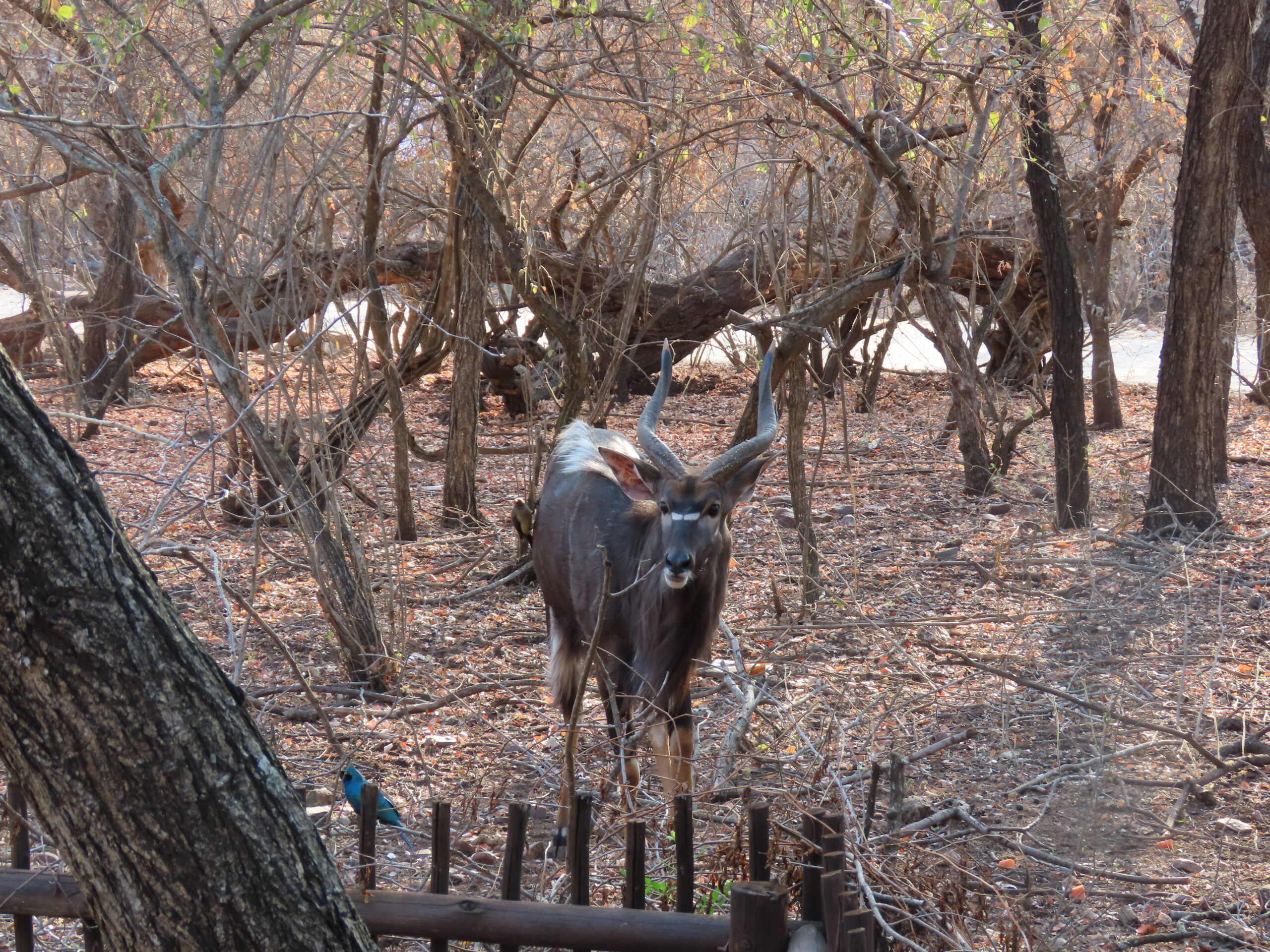
Norman is still struggling with his broken left front leg. It’s obvious he’s in a lot of pain as he gingerly walks into our garden frequently, dangerously jumping over the little fence so we can easily feed him. We don’t encourage him to jump the fence since we’re happy to feed him outside the fence.
However, wildlife, like humans, have familiar routines, and entering the garden closest to the veranda is Norman’s preferred behavior. We realize how dangerous this is for him. With the holidaymakers mostly gone from the park, there is an endless stream of wildlife hour after hour, many of whom like to hang around to see if Norman comes and gets apples and carrots, along with pellets.
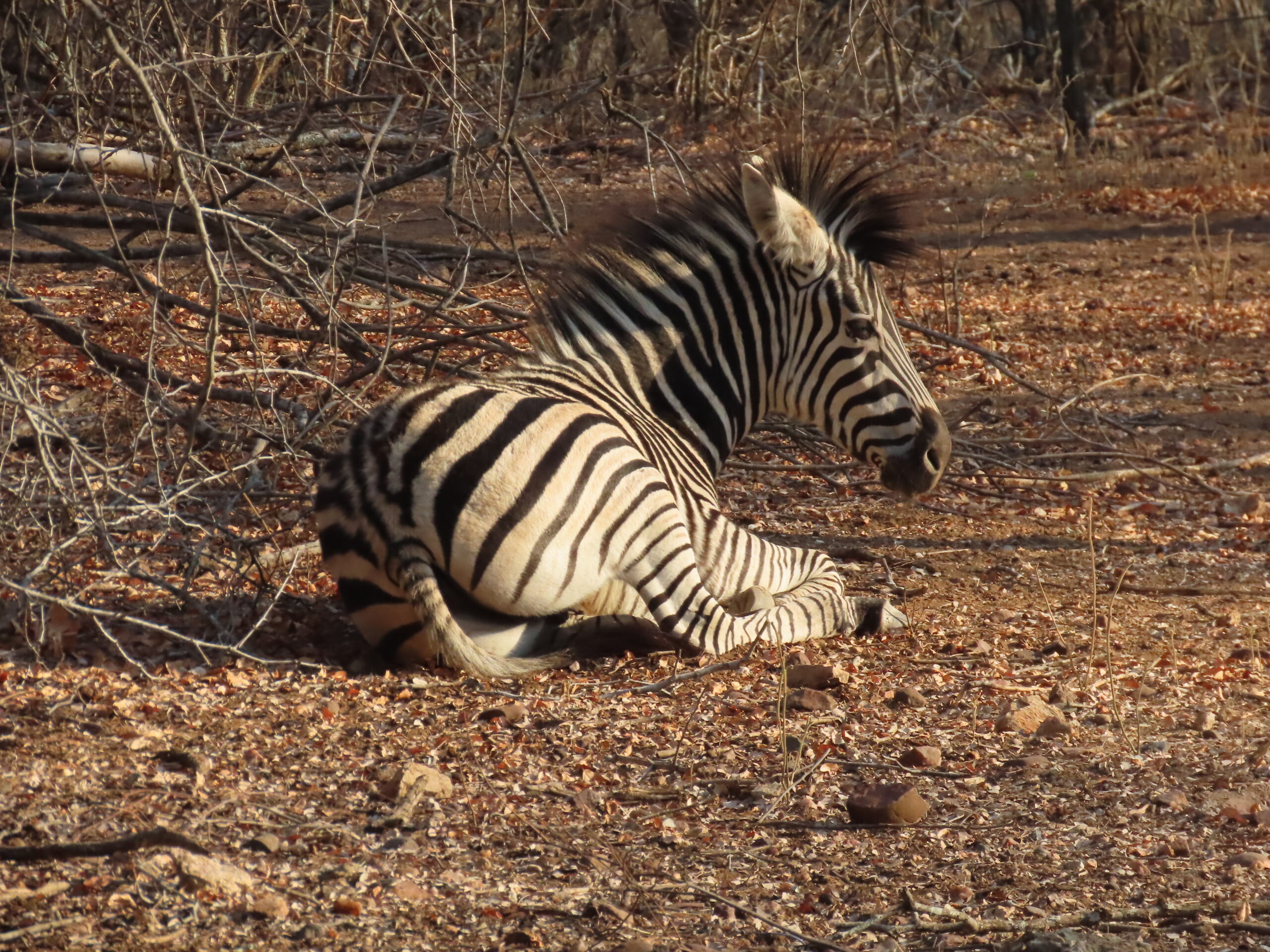
He still looks healthy and doesn’t appear to have lost weight. If he can maintain his current state of health and the leg heals in a few months, his longevity is undeterred. By the time we leave here in September, we should have a good idea as to his fate.
Here are some interesting facts about nyalas:
20 Fascinating Facts About the Nyala
In the heart of southern Africa’s woodlands and thickets, one of the continent’s most elegant and elusive antelopes resides, the nyala (Tragelaphus angasii). Known for their striking appearance, gentle behavior, and preference for dense bush, nyalas are a favorite among wildlife enthusiasts and safari-goers alike. These beautiful creatures are ubiquitous in reserves such as Kruger National Park and private conservancies like Marloth Park in South Africa. Let’s explore 20 intriguing facts about this unique animal:
-

A suckling baby zebra and its mom. Sexual Dimorphism at Its Finest
One of the most notable traits of the nyala is the stark difference in appearance between males and females. Males are dark brown to slate grey with spiral horns and long shaggy hair, while females are bright reddish-brown with no horns and have bold white vertical stripes. -
Medium-Sized but Graceful
Nyalas fall into the medium-sized antelope category. Adult males can weigh up to 125 kg (275 lbs), while females are significantly lighter, typically ranging from 55 to 68 kg (120–150 lbs). Their build is slender and elegant, especially the females. -
Shy and Elusive
Unlike more gregarious antelope species, nyalas are shy and prefer to remain close to thick cover. They are often seen at dawn or dusk, emerging cautiously to graze or drink water. -
Not Big on Herding
Nyalas are semi-solitary or live in small groups. Females and young may form loose groups of up to 10 individuals, but adult males are often solitary except during mating periods.
Norman moved very carefully to eat the treats we tossed to him. -
Masters of Camouflage
Thanks to their coloration and habit of staying in dense vegetation, nyalas blend remarkably well into their environment. This makes them difficult to spot despite their size. -
White Body Markings
Both males and females have white markings on their face, throat, flanks, and legs. These markings serve as visual signals for communication and recognition. -
The Male’s Striking Spiral Horns
Only the males grow horns, which can reach lengths of up to 80 cm (31 inches). These spiral-shaped horns are used in display and dominance fights with rival males. -
Non-Territorial
Unlike many other antelope species, nyalas are not territorial. Males establish dominance hierarchies instead of defending a specific area. -
Complex Courtship Rituals
When courting a female, a male nyala performs a slow, deliberate dance, arching its back and raising its white crest to appear more imposing.
Norman, waling gingerly past resident impala Mac and a few friends. -
Feeding Habits
Nyalas are browsers and grazers. They feed on leaves, fruits, twigs, flowers, and occasionally grasses, especially in the early morning and late afternoon. -
Water Dependent
They require regular access to water and are typically found near rivers, streams, or waterholes. -
Quiet but Communicative
Nyalas make few vocalizations, but they do communicate through posture, tail flicks, foot stomping, and occasional barking alarm calls. -
Good Swimmers
Though they prefer dry land, nyalas are capable swimmers and will cross rivers if necessary to reach food or escape danger. -
Predators in the Wild
Lions, leopards, hyenas, and African wild dogs are natural predators of the nyala. Young calves are particularly vulnerable to eagles and pythons.
We don’t know how Norman manages to jump the little fence with his left front broken leg. Sheer determination brings him to see us and enjoy some fruit and vegetables. -
High Reproductive Rate
Females give birth to a single calf after a gestation period of about seven months. Calves are hidden in dense vegetation for their first few weeks of life. -
Threat Displays Over Combat
When males compete for dominance, they often engage in a ritual display of size and strength rather than direct physical fights. Actual combat is rare. -
Life Expectancy
In the wild, nyalas live up to 12 years, though this can extend to 16 years in captivity under human care. -
Cultural Significance
In some local traditions, the nyala is a symbol of grace and elegance. In Zulu culture, seeing a nyala during a journey is considered a sign of good luck. -
Conservation Status
The nyala is currently listed as Least Concern on the IUCN Red List. Populations are stable, thanks to protected areas and game reserves across southern Africa.
A giraffe walked by, along with a flock of helmeted guineafowl. -
Popular in Private Reserves
Nyalas adapt well to fenced reserves and private game farms, where their calm nature and beauty make them a prized species for ecotourism and conservation breeding programs.
The nyala might not be as famous as the lion or elephant, but anyone who has had the pleasure of spotting one in the wild knows they are a true treasure of the African bush. Their shy, peaceful nature, combined with their breathtaking appearance, makes each encounter memorable. As guardians of biodiversity and ambassadors of Africa’s natural beauty, nyalas deserve every bit of admiration and protection we can offer. We have found this to be so true.
On another note, last night we met friends, Roz and Les, at Ngwenya, for sundowners on the deck and the buffet dinner. We hoped they enjoyed the food as much as we do, and we were thrilled that they loved it. We had a lovely time together.
There have been issues with WiFi over the past several nights, and we’ve been unable to stream our shows due to numerous outages. Hopefully, that will be repaired soon. Apparently, the fiber in Tonga is down due to an Eskom error, and the provider, Tech Connect, has no control over this. However, we are reminded, “TIA” – this is Africa, and you know what happens.
Be well.
Photo from ten years ago today, July 25, 2015:


